There is a place in Japan that you’ve probably never heard of—in fact, most Japanese people have never even heard of it, except for those already living in the area. I first heard about this place in 2005 from an Australian colleague at my English teaching school in Tokyo. My colleague, let’s call him Ben, because that was actually his name, told me about these two tiny islands off the coast of Wakkanai, the northernmost city in Japan, on the northwest side of the island of Hokkaido. For eight months of the year, Wakkanai and its two tiny neighbors are the kind of cold that you would only want to experience if you are looking for ski slopes, snow walls, or, even better, Russian neighbors. During the balmy months from June–September, however, the fishing port of Wakkanai, and its handful of hotels and restaurants, serve as a wildflower infused launching port for the true wonders of its two tiny neighbors two hours away by ferry.
In mid-July, 2015, ten years after first hearing about these intriguing islands at the top of the world, I scored a four-day weekend and flew directly from Tokyo to Wakkanai on ANA (one of the major Japanese airlines) and finally had the chance to visit this northernmost part of Japan.
I’m going to honest with you right from the start. The main reason that I was going to this region was to stay at a hostel that I had discovered on a hostel review site back in 2005, a place called Momoiwaso (which translates to “Rock that looks like a peach”, named after a rock in the Japan sea directly across from the hostel). Everything else for me was just icing on the cake. The reviews that I had read back then described the hostel as so unique and unforgettable that I was curious what it really felt like to visit. As one youth hostel website listed Momoiwaso as being closed from Oct 1-May 31, I knew that July was going to be the best time to go to take advantage of the Japanese national holiday and book a long weekend.
Itinerary
If you’d like to fit in the same itinerary on your four-day trip to Wakkanai region from Tokyo, here was my general route:
Day 1: Fly from Tokyo-Wakkanai (about 2 hours), sleep in Wakkanai. I stayed at the Wakkanai Youth Hostel, which was out of the way and up a hill but offered a nice room and a free drive back to the ferry port by the hostel staff early the next morning.
Here is the ferry schedule: http://www.heartlandferry.jp/english/
Day 2: Ferry at 7:15am to Oshidomari, booked a day tour by bus at the ferry port (the tour perfectly times your return to the Oshidomari port in time to catch the 3:20pm ferry to Kakufa on Rebun Island, transfer to Momoiwaso
Note: To stay at the Momoiwaso, the only information that I could find was the following website: http://www.youthhostel.or.jp/English/menu2.htm
I had to call the telephone number and explain myself in Japanese, but I think that English may also work if you keep it simple. It may also be best to try to call after June 1st, as I’m not sure that the phone number will be working before then. If you are already in Japan, a concierge from your Japanese hotel may be able to call and book ahead for you. When calling internationally, please add +81 and drop the first “0” of the phone number. It may also be ok (but not guaranteed of course) that there will be space by just turning up in person. The hostel accommodates around 68 people.
Day 3: Leave at 5am from Momoiwaso for the Hachijikan course (8-hour hiking course), arrive back for dinner and second night at Momoiwaso
Day 4:Leave Momoiwaso for the 8:45am ferry back to Wakkanai, early afternoon flight back to Tokyo.
Note: A lot of people like to climb or camp near the dormant volcano on Rishiri Island known as Rishiri-Fuji because it looks so much like Mt. Fuji. I would’ve loved to do this as well but wanted to give myself enough time to get a good night sleep the first night at Momoiwaso for the long hiking day on Rebun. It may be best to add an extra day or two to this itinerary for Rishiri-fuji.
Wakkanai
I found Wakkanai to not have as many wildflowers as I was hoping, but because my hostel was up a hill, I did get a chance to see more on the way up and around the places off the main road going through Wakkanai. My absolute highlight of Wakkanai was a sushi restaurant called Narazushi, which a student of mine in Tokyo introduced me to because he used to work there in high school. Once I told the sushi master at Narazushi my friend’s name, I had a wonderful hometown-like experience and got to meet the sushi master’s wife and have an absolutely incredible meal. In my research for this blog post, I also discovered that Narazushi was listed for the first time in the Michelin Guide in the 2017 Special Hokkaido edition (published May 19, 2017) that is only updated every five years. Narazushi received a “Bib Gourmand” mention, which means that it offers high-quality food at a reasonable price. Make sure to try the “uni” or “sea urchin” while you’re there, as this is one of the foods that Hokkaido is famous for.

Wakkanai, with Rishiri and Rebun being the two little dots off the west coast. Rebun is the smaller of the two.
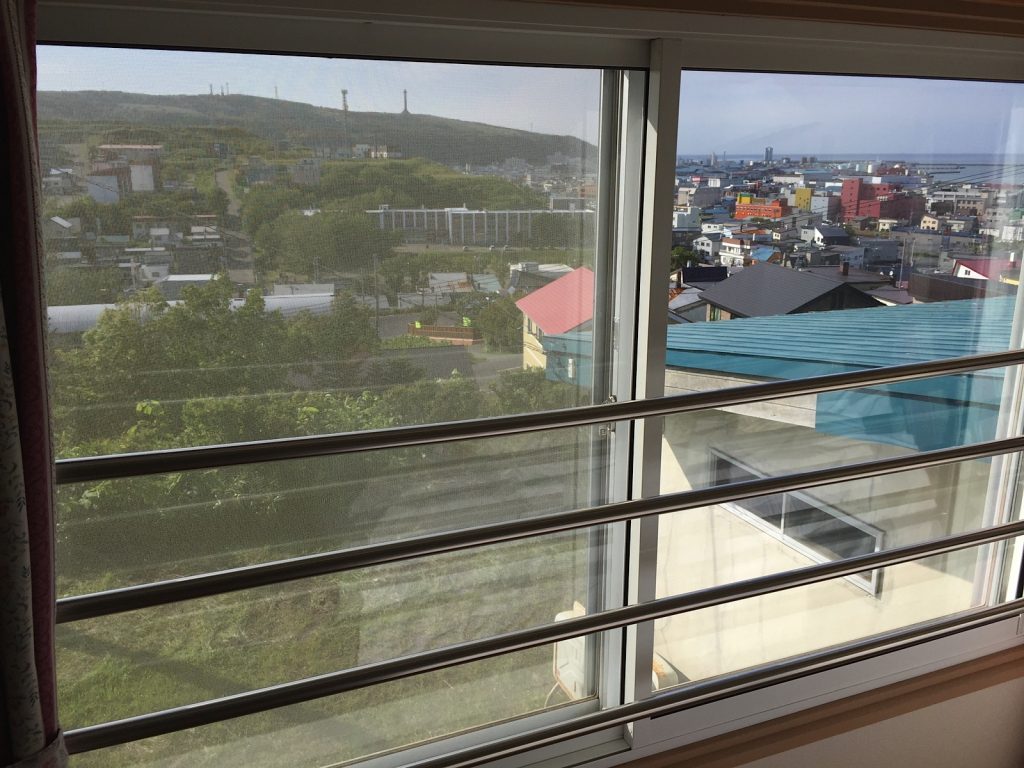
The view of Wakkanai from my hostel, quite a hike from the bus stop but quite relaxing
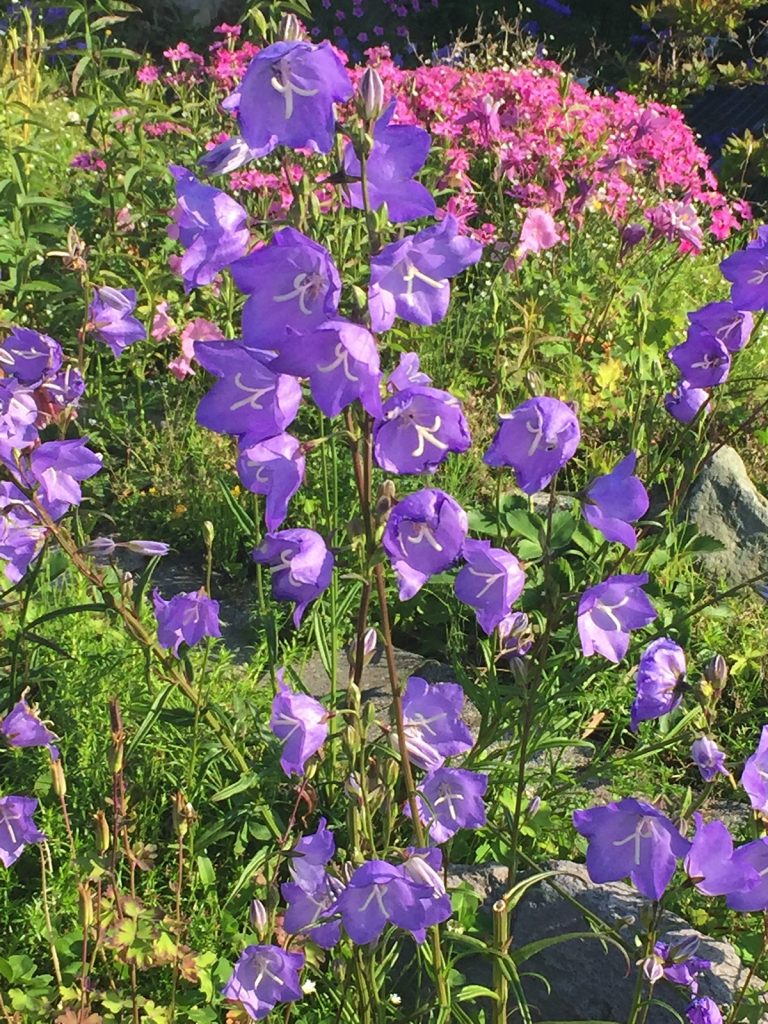
Some of the multitude of wildflowers in this northern part of Hokkaido every summer
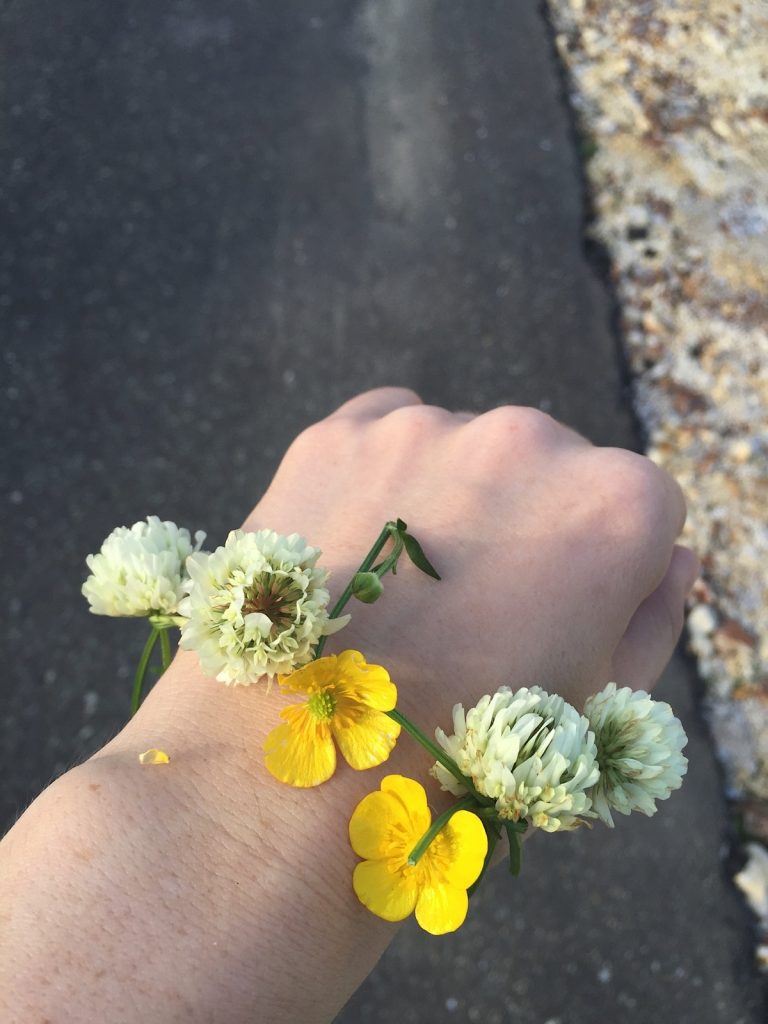
Throwback to when I made these bracelets as a child in Cincinnati, Ohio.
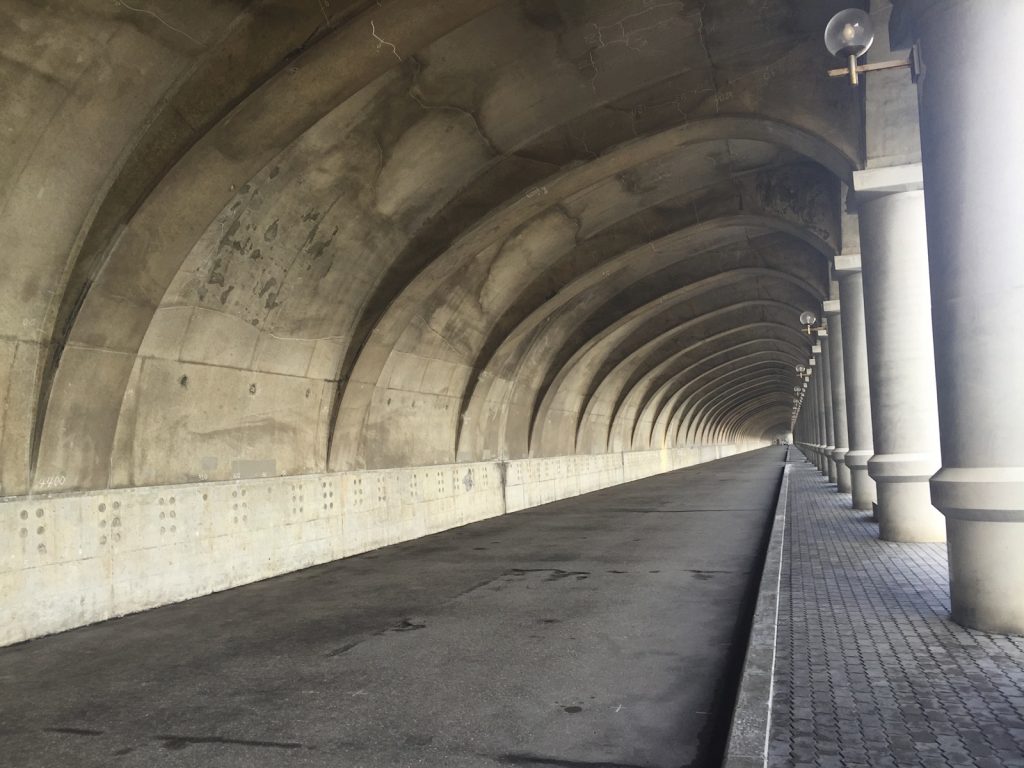
Surprising Roman architecture at Wakkanai Port Kita Bohatei Dome
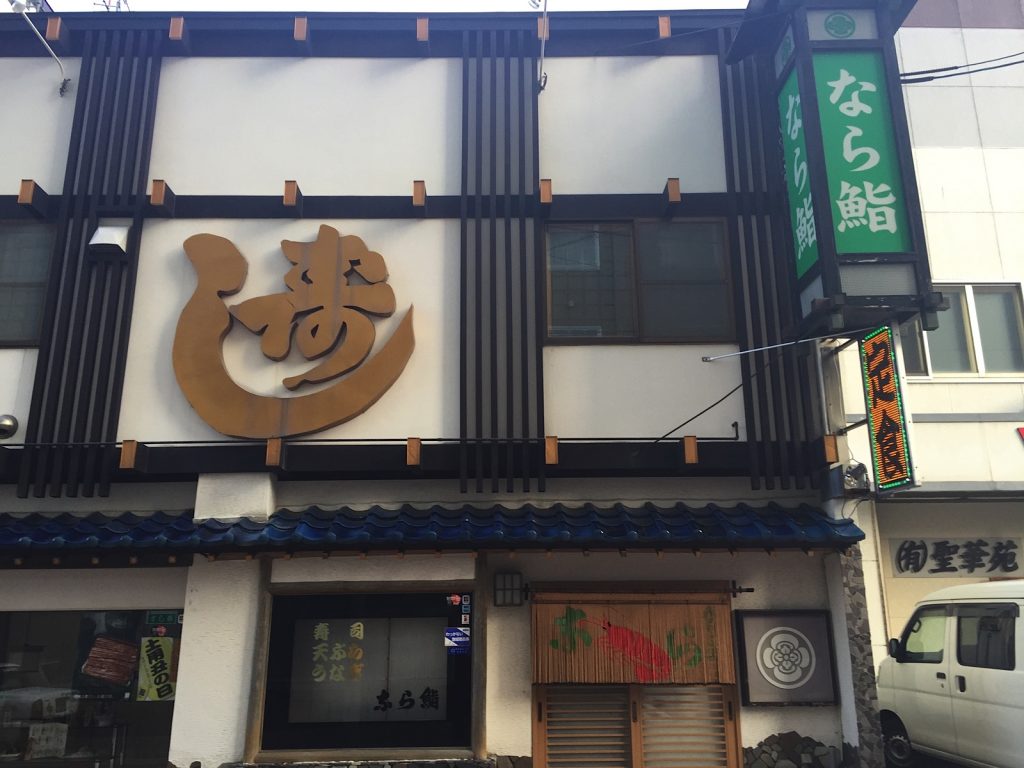
One of my students in Tokyo worked in high school at this excellent sushi restaurant in central Wakkanai called Narazushi. The owner and his wife were very kind to me and served me an excellent sushi meal. Don’t miss it in Wakkanai!
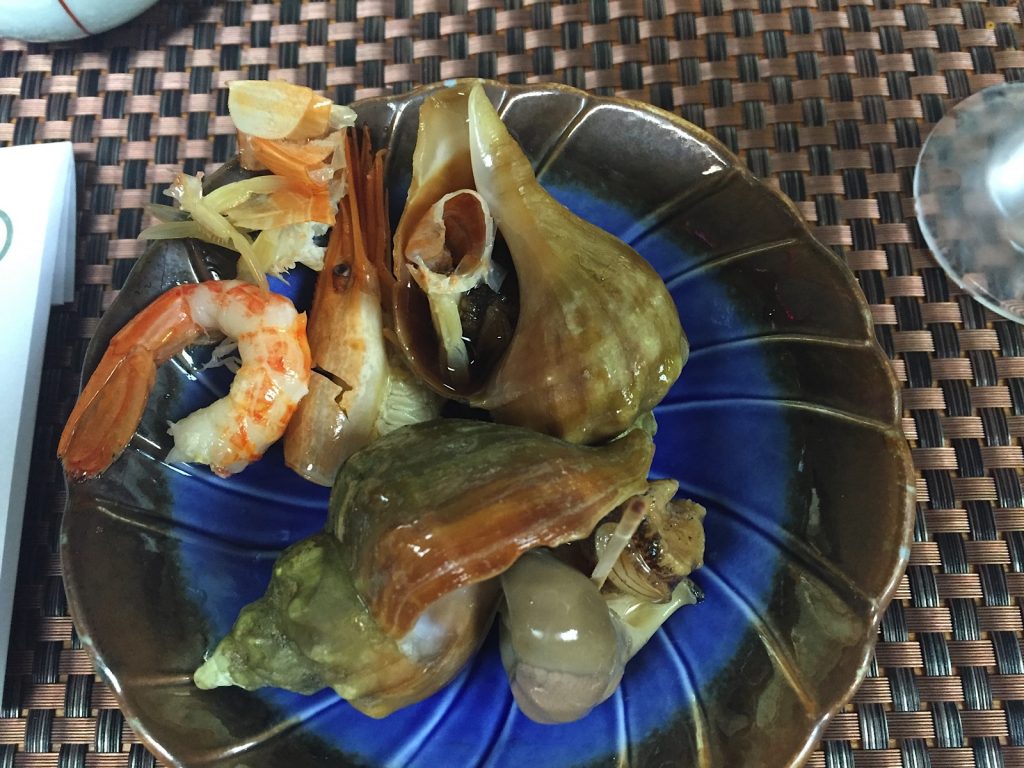
Open mind, happy belly!
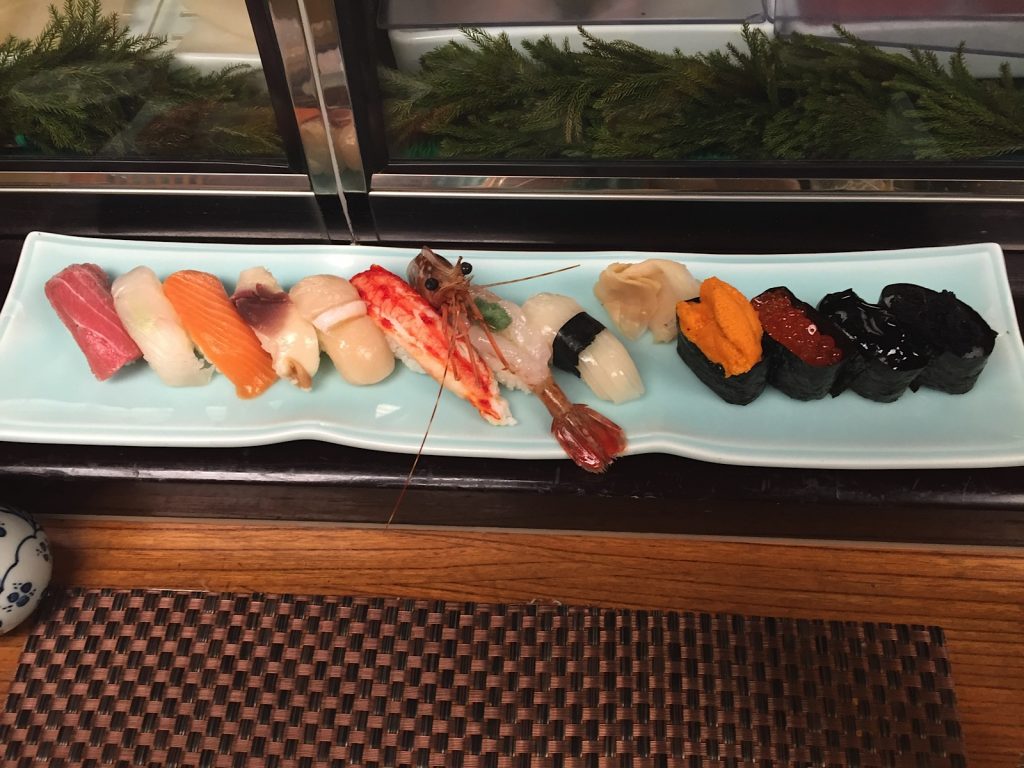
The Hokkaido special edition of the Michelin guide is only published once every 5 years, and Narazushi won special Bib Gourmand recognition in the 2017 edition just realized mid-May 2017 for offering excellent food at a moderate price. Congratulations, Narazushi!
Rishiri Island
Because Rebun Island was my focus, I took an all-too-brief trip to Rishiri Island, which is most famous for its dormant volcano known as Rishiri-san or Rishiri-fuji (due to it looking so much like Mt. Fuji!). At 1,721 m, Mt. Rishiri is less than half the height of its more famous twin and is doable for even novice hikers, though it can be challenging in some places. There is a campsite partway up the mountain and an unmanned hut near the summit as well as great views of Rebun Island and Russia’s Sakhalin Island from the top on clear days. Please note that the climbing season starts the first week of July each year and closes by the end of August.
My day tour booked spontaneously at the Rishiri ferry port for around 3,000 yen included stops at Hirenuma Pond and Ototomarinuma Pond, both offering different views of Mt. Rishiri. Rishiri Island also has a wide variety of birdlife and wildflowers in the summertime and fresh seafood, which we were served from food stalls near our bus stops. Because I wasn’t climbing Mt. Rishiri, I actually felt satisfied with my bus tour. If I was coming back again, I would also book in time at Rishirifuji Onsen
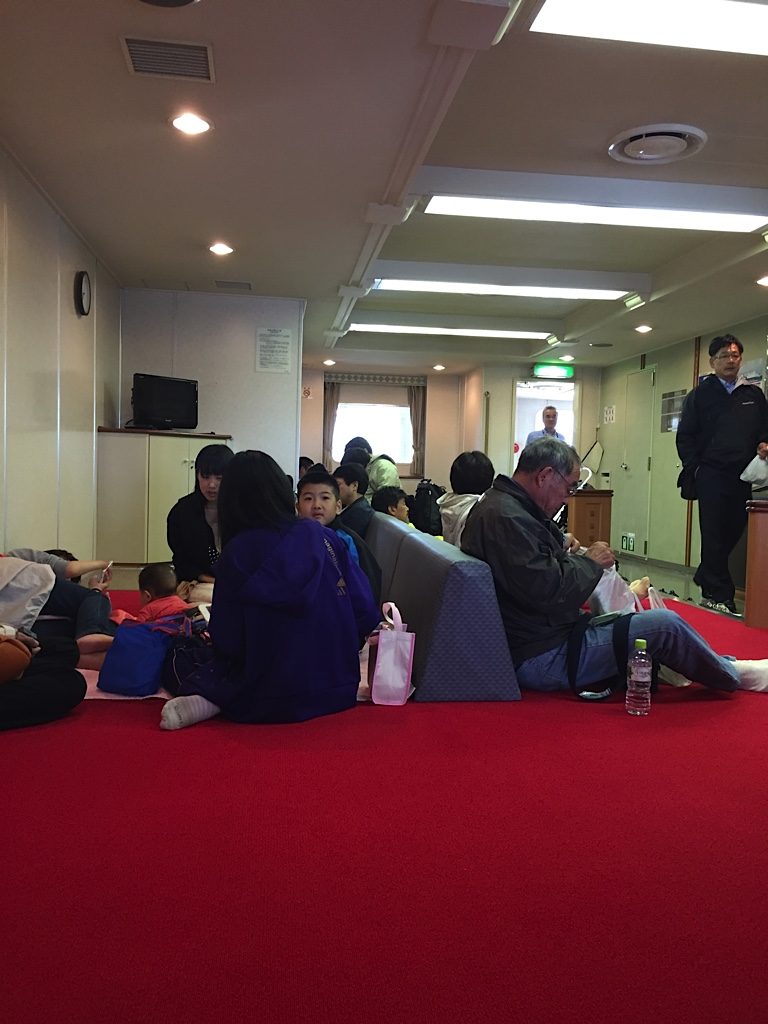
Taking the ferry from Wakkanai to Rishiri Island – the ferry ride takes 1 hour and 40 minutes and leaves three times per day during from June–September (times vary during the rest of the year).
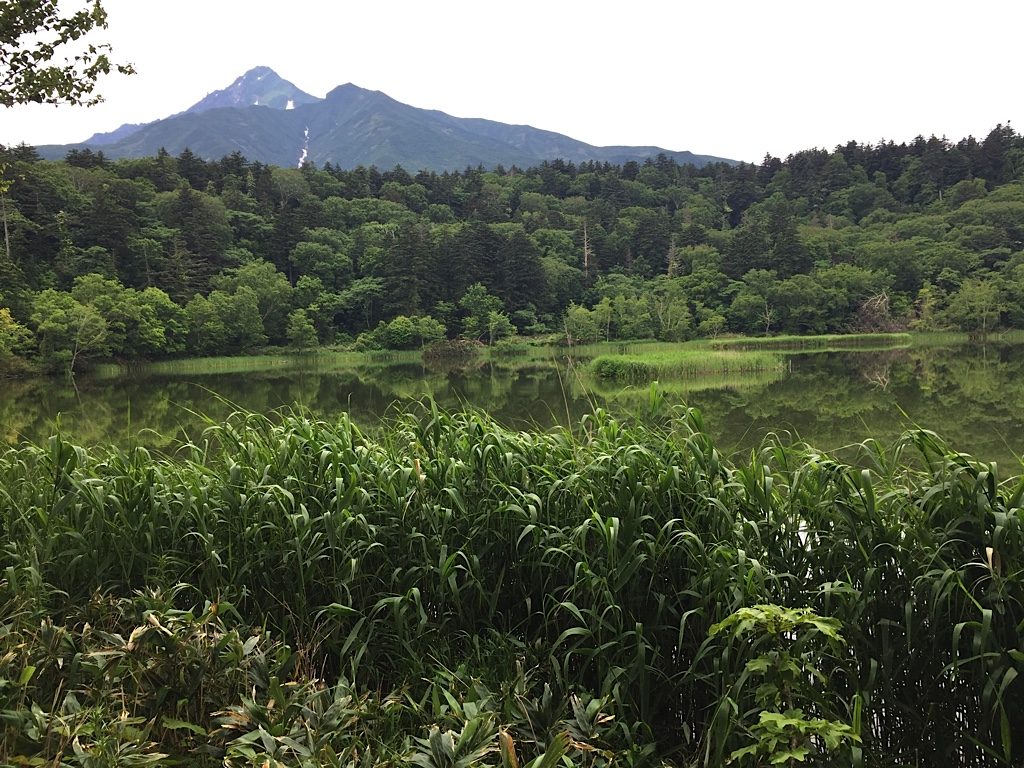
The largest pond on Rishiri Island – Otatomari, with the beautiful Mt. Rishiri in the background, also known as Rishiri-Fuji for its similarity in appearance to Mt. Fuji! This park was gorgeous to slowly walk around and take in the lush green.
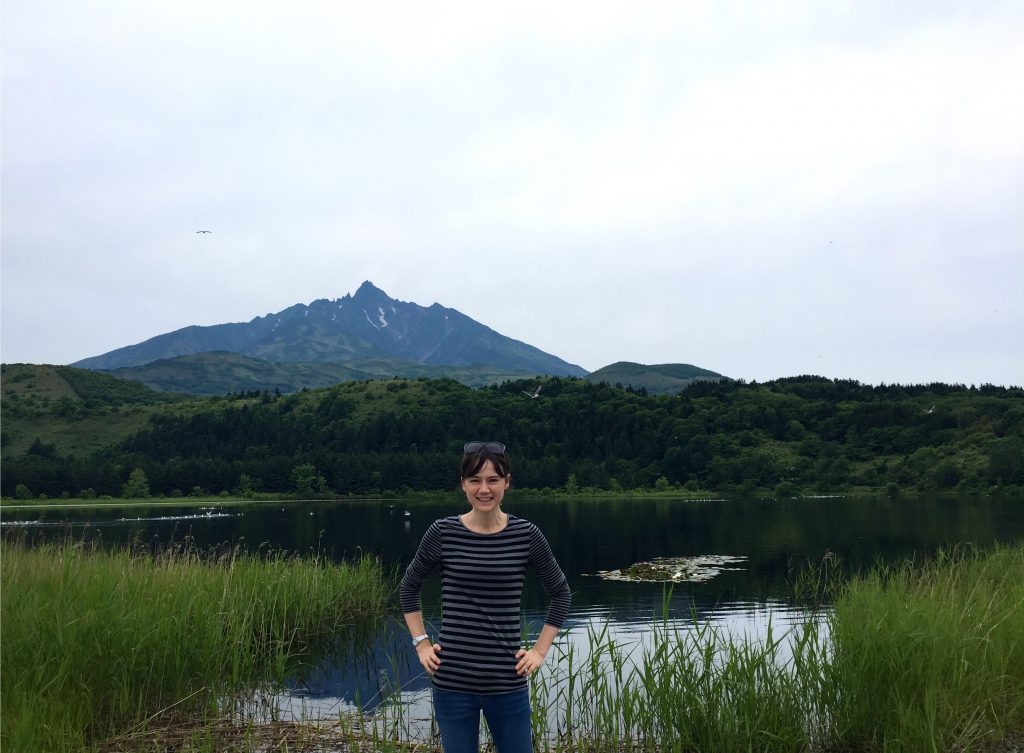
Having a nice break at Hirenuma Pond, a different view of Rishirifuji
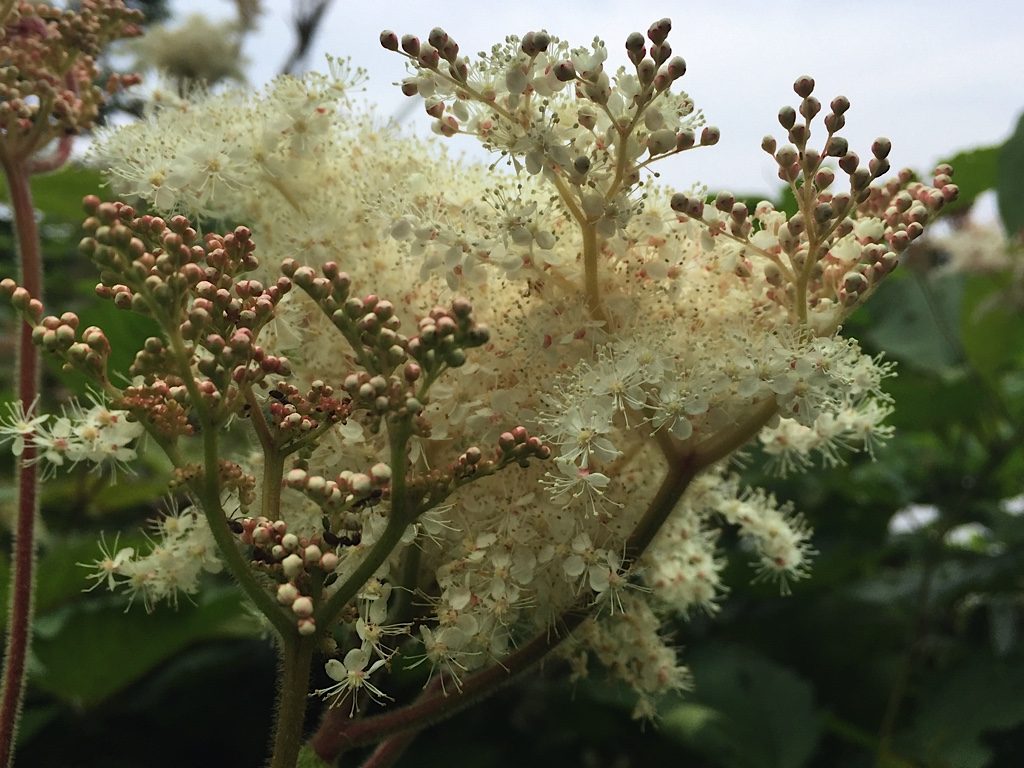
Beautiful wildflowers all around
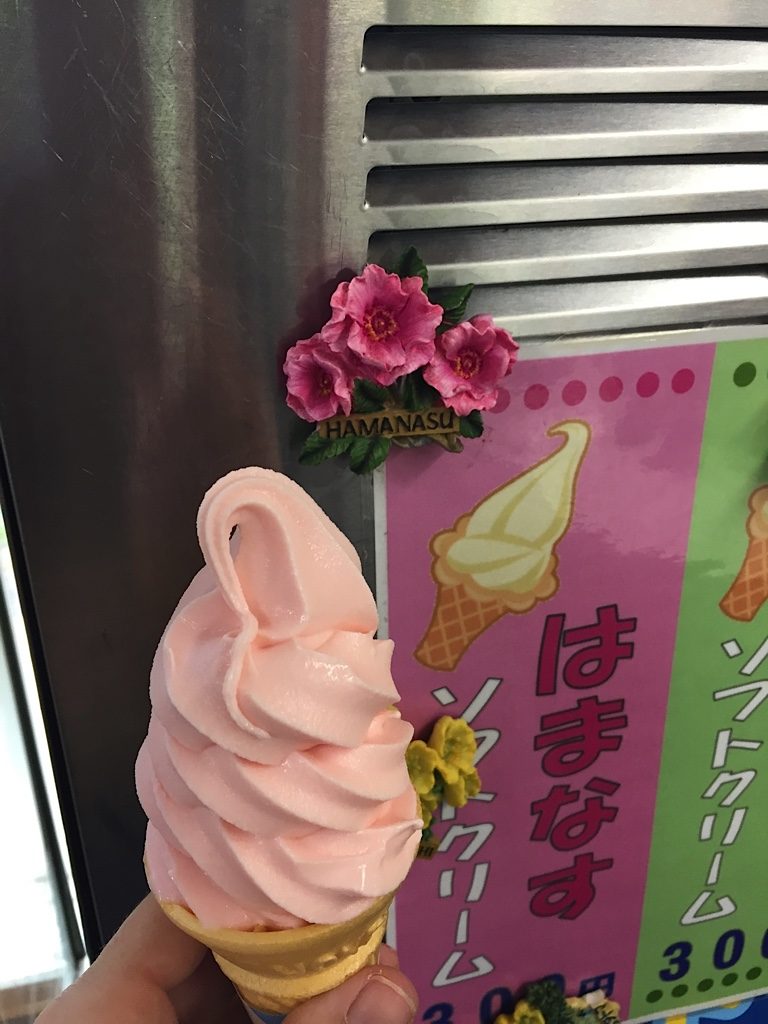
The beautiful “Hamanasu” flower, known as “Rugosa rose” in English, only grows in the Northern part of Japan – trying out the local Hamanasu ice cream – pretty tasty
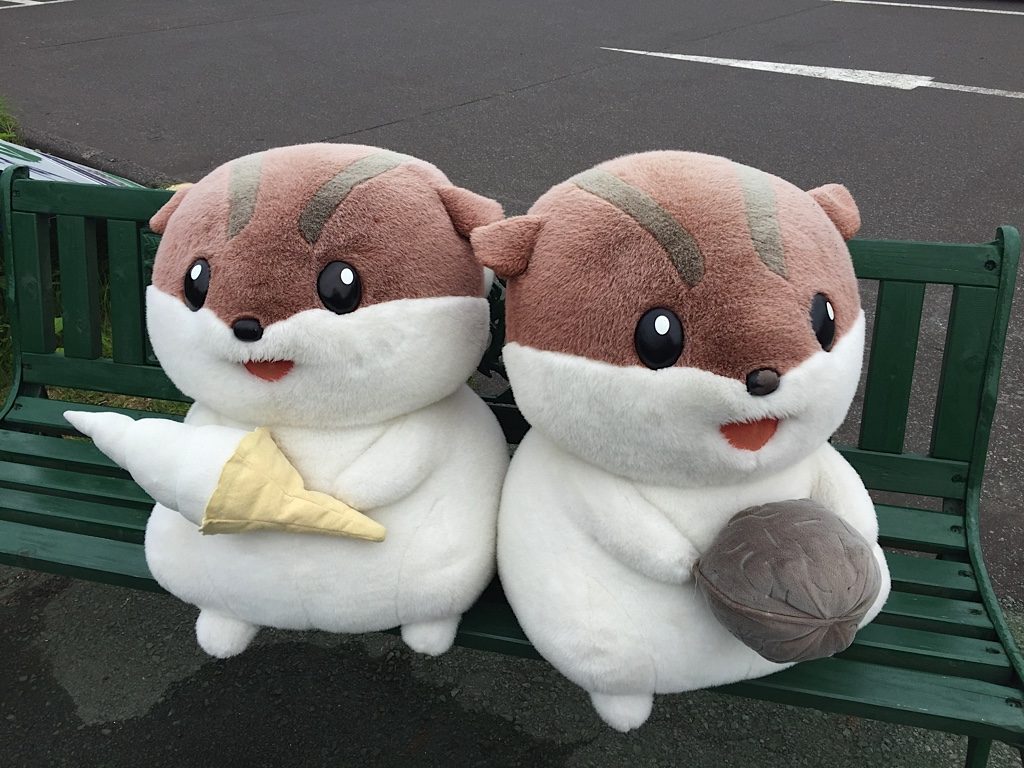
Finding some cute friends to have ice cream with
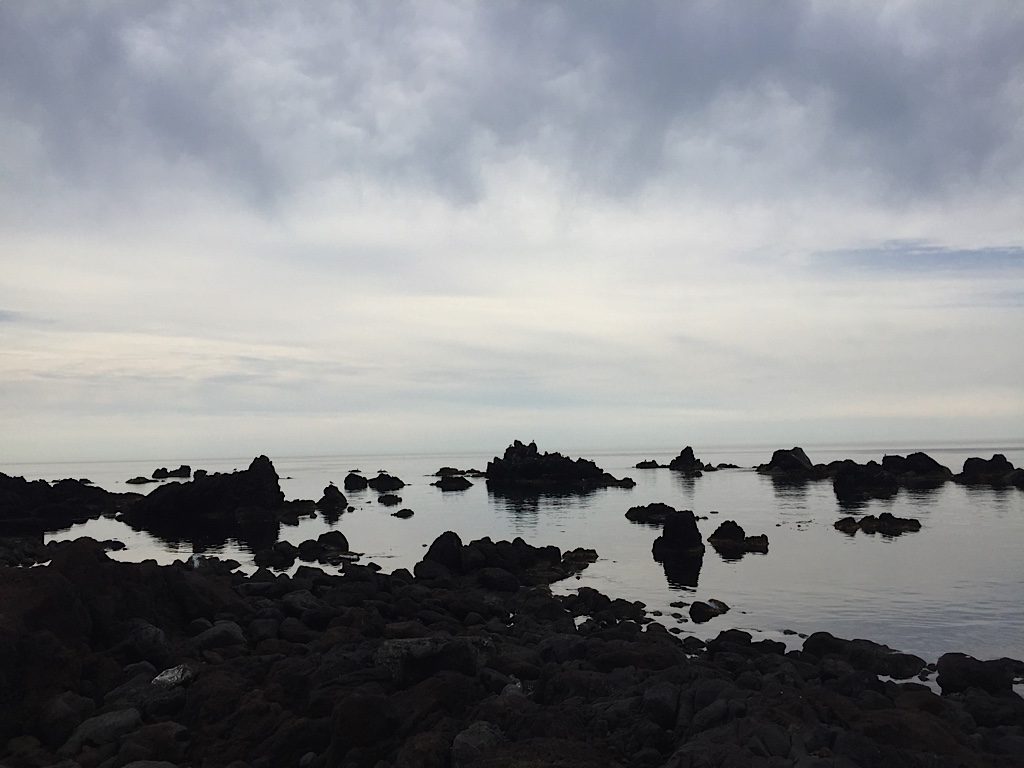
One of the most beautiful sites on Rishiri Island on my bus tour. It really feels like you’re at the edge of the world up here
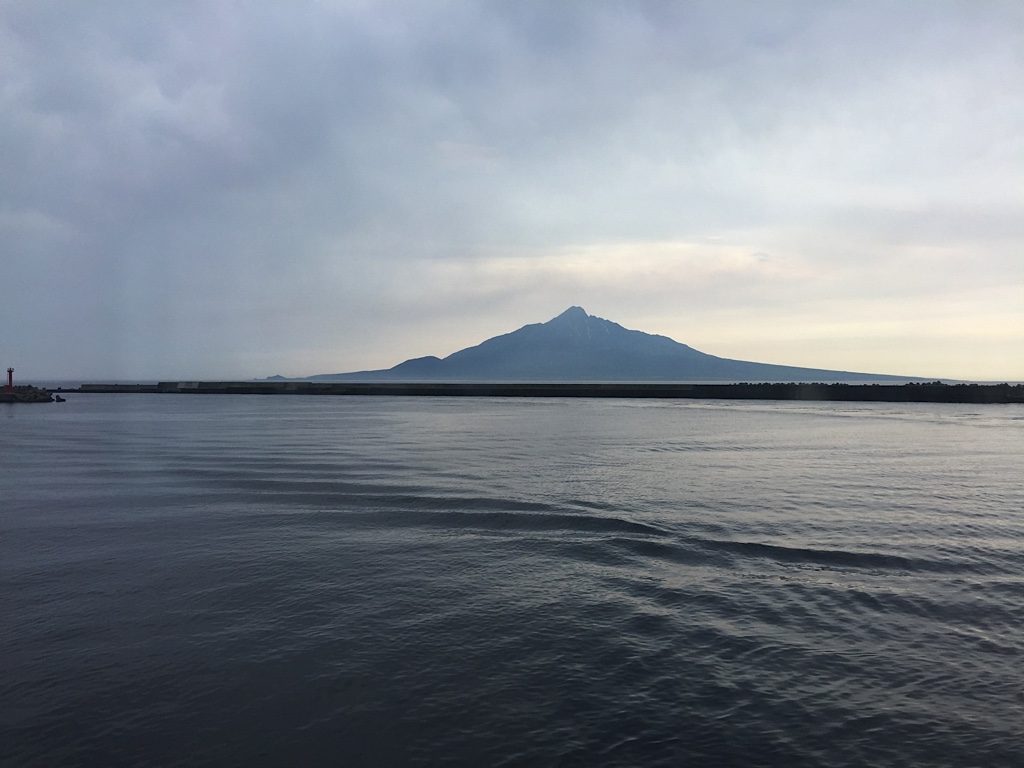
Looking over at Rebun Island, where I would be heading on the 3:20pm ferry from Rishiri.
Rebun Island – My stay at the Momiwaso Youth Hostel
When I arrived at Kafuka Ferry port on Rebun Island just after 4pm, I was greeted by a man wearing a big bandana holding a Momoiwaso sign who was much quieter than I had expected anyone from this crazy hostel to be. He later turned out to be one of the most spirited guys (the one holding the tambourine in the photo below) at the hostel, but maybe this was his way of taking a break by quietly collecting all of us at the port. Before I knew it, I was put into a minivan with two 60 year-old Japanese women who seemed to speak no English. Not sure of how I was going to get on with a lack of fluent Japanese, I stayed quiet in the van looking out at the beautiful sea and wondering what was going to come next. As we passed a turnoff to a path that the driver (let’s call him Yuki) indicated was famous for wildflowers, we suddenly picked up a young blond-haired Caucasian guy who it turns out was also staying at the Momoiwaso and was a young student from Montreal named Frederic. Suddenly, I had an English-speaking companion who shared my sense of humor about the quirky experience that we seemed destined for around the corner.
Forget Time, Forget Love, Forget Pain, We Are Going Through a Tunnel Now…
Ten minutes after picking Frederic up, the driver got serious for a moment and told us that we were about to go through a tunnel, on the other side of which, we would enter a new time zone, unique only to the Momoiwaso Hostel, 30 minutes behind the rest of Japan. Let me set the record straight right now. There is no other time zone in Japan. Everything is within the time zone throughout the entire country. These people have decided to bend time for themselves. Still, the driver insisted…”Forget time, forget love, forget pain, forget everything you know because we are going through a tunnel now and everything will now be on Momoiwaso time.” Frederic looked at me and I wondered if he was thinking what I was thinking….were we, fact, about to enter the Rocky Horror Picture Show? We were about to find out…
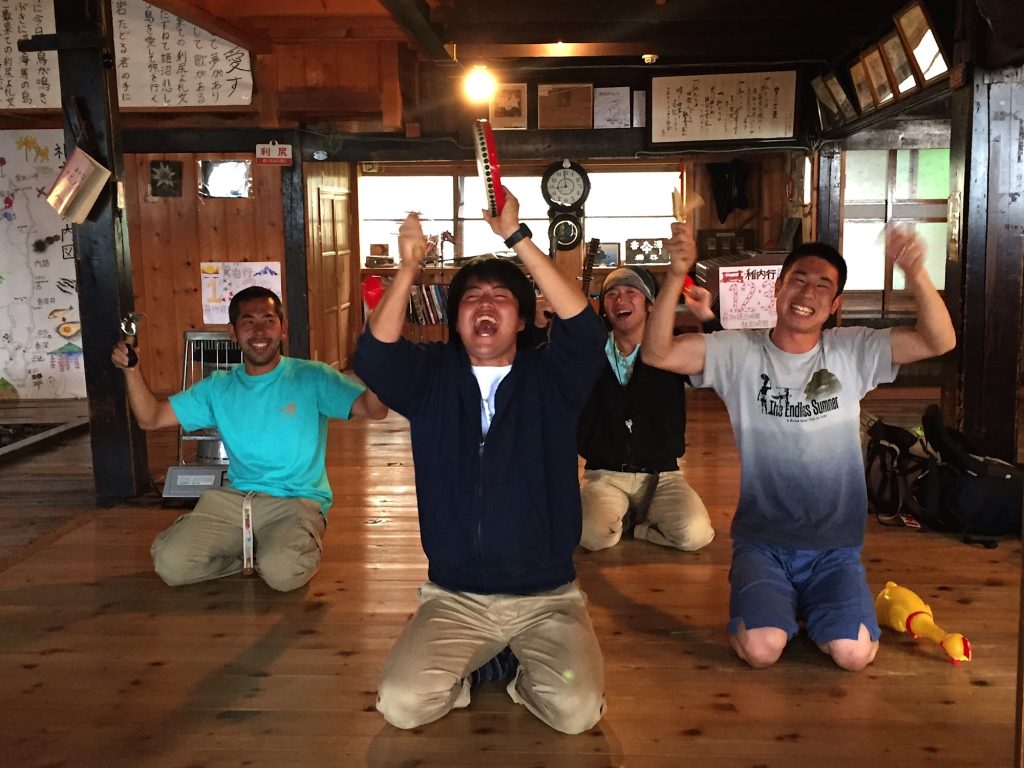
The unforgettable welcome at Momoiwaso Youth Hostel. The staff shout “Okaerinasai” or “Welcome Home!” the first time that you arrive
Upon first arriving, we got out off the van and the driver ran into the house ahead of us, telling us to knock before we entered and that we should all enter together. When we did, we opened the door to the scene above, the most excitable welcome that I’ve ever received anywhere. I mean, who else brings a rubber chicken? We then were guided to check-in and the rules of Momoiwaso were explained (Momoiwaso, by the way, will run you about 5,500 yen per night with dinner and the hike and make sure to bring more than enough cash for your entire stay, as there is no ATM anywhere nearby after leaving the ferry port—the WiFi does work in the main part of the hostel only, but the signal was not very strong) , starting with that pesky time zone problem. Each day at Momoiwaso is very regimented. Breakfast and dinner are only served at specific times in the dining hall. Like an American summer camp movie based in the 1960s, the morning wake-up call comes early, sometimes as early as 4:30am Momiwaso time for the hikers of the day. There are also frequent loud messages coming over the speaker system from the incredibly energetic staff (I’m assuming these guys are drinking very strong coffee several times a day, as alcohol is not allowed anywhere on the premises) to remind everyone of the different events throughout the day.
My first night at Momoiwaso, just one hour after arriving, the staff called everyone out to the front lawn to watch the sunset altogether while the four main male staff members loudly serenaded the sun with the guitar and a couple of tambourines. Wearing their bandanas with pride and not stopping to even catch a breath, they sang for 30 minutes straight at a pitch and volume often unpleasant to the ear but just edgy enough that it was impossible not to smile at the sheer, mad existence of this place.
After dinner that first night (and every night, I would later discover), there is also an evening entertainment show, which also reminded me strongly of summer camp and activities in the Japanese elementary schools that I’ve worked in previously. Participation in the evening entertainment is required, and staying in your room wouldn’t be an option anyway due to the staff checking if you’re around and the majority of the rooms being located right over the performance hall. There are skits, songs, dances, jokes, a presentation of the following day’s hiking course, and even an eating contest. It was impossible not to laugh at the sheer madness of it all, especially for someone who was completely lost in translation. At the same time, it was impossible to be bored, sit still, or play on your phone and zone out. Engagement with this isolated hostel community was unavoidable. I also found myself opening up, yelling, screaming, being completely spontaneous, things that had become absent in my quiet, daily city routine back in Tokyo. Though this was not at all a relaxing experience, I felt myself relaxing in the permission to express that wild side of me that loves being loud, singing at the top of my lungs, and running through the grass barefoot. If you have ever wanted to reconnect with that part of yourself that now may seem more serious with the added years and layers of responsibility, Momoiwaso can deliver.
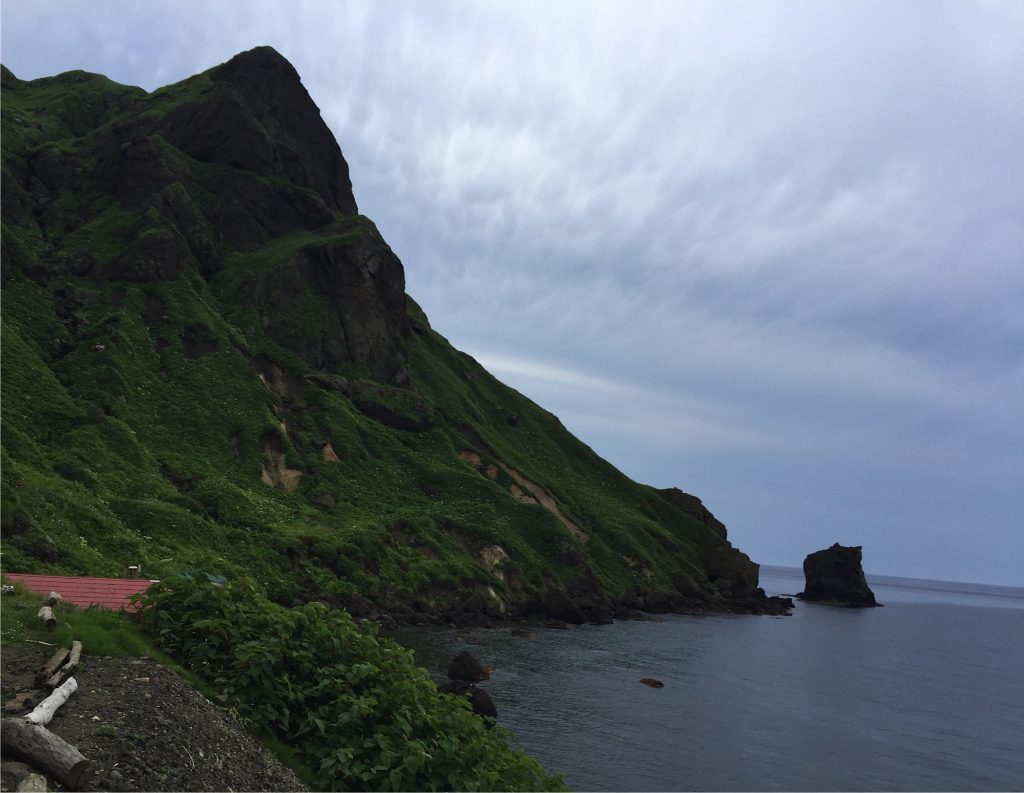
It’s easy to believe that Momoiwaso has its own time zone because it feels all alone at the edge of the world. Its surroundings are beautiful with some of the most amazing sunsets you will ever see.
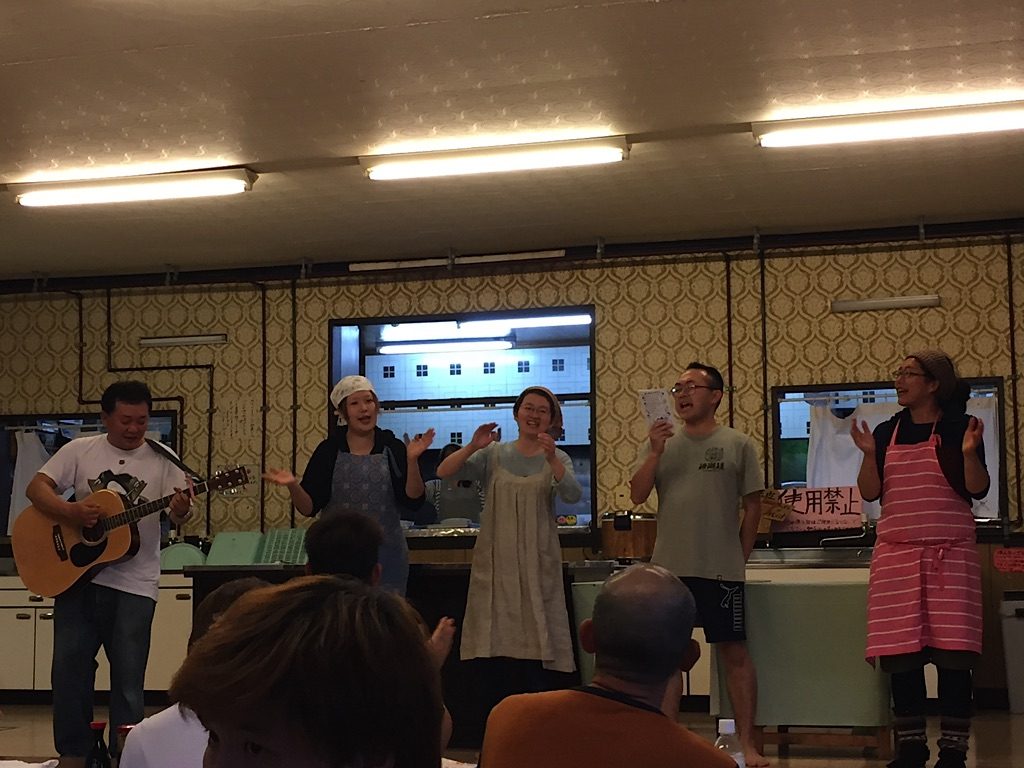
This is not your typical dining hall – complete with singing and dancing. It seems like Momoiwaso has many repeat guests that start to learn the songs and participate.
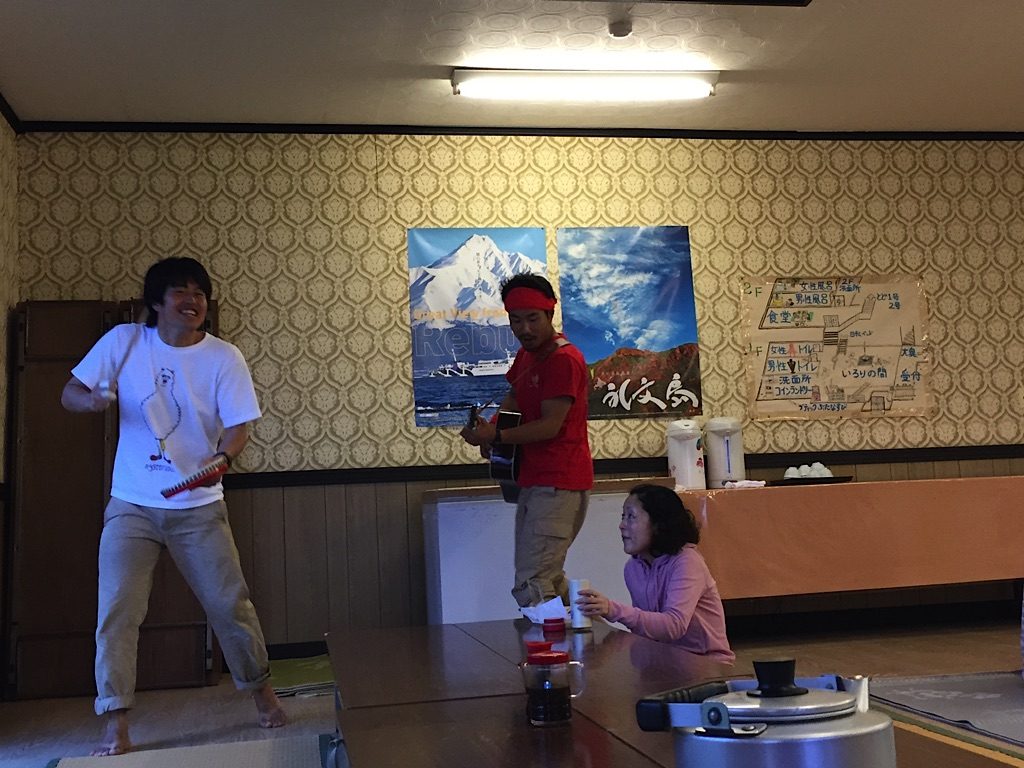
The hostel staff randomly broke into our dinner time and started singing and dancing. I was beginning to get the sense that this was not the kind of place to relax but to jump in full force with all of your senses.
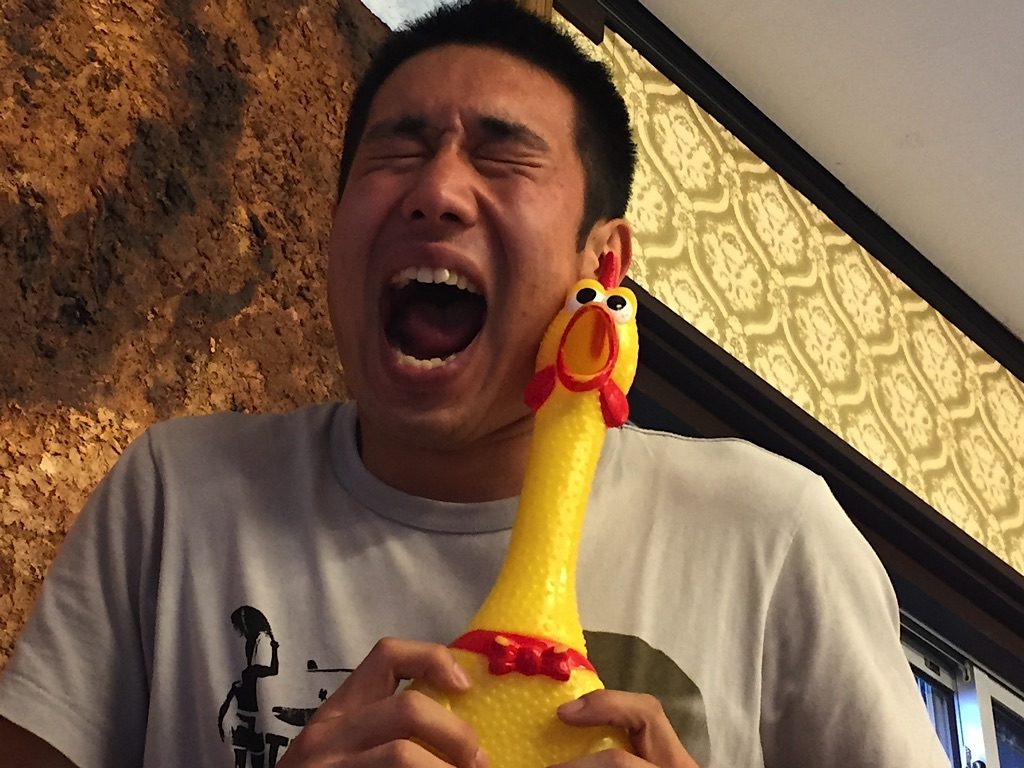
The highest energy hostel staff ever. I’m sure that some people who stay here might think it’s too much, but this is the Momoiwaso way!
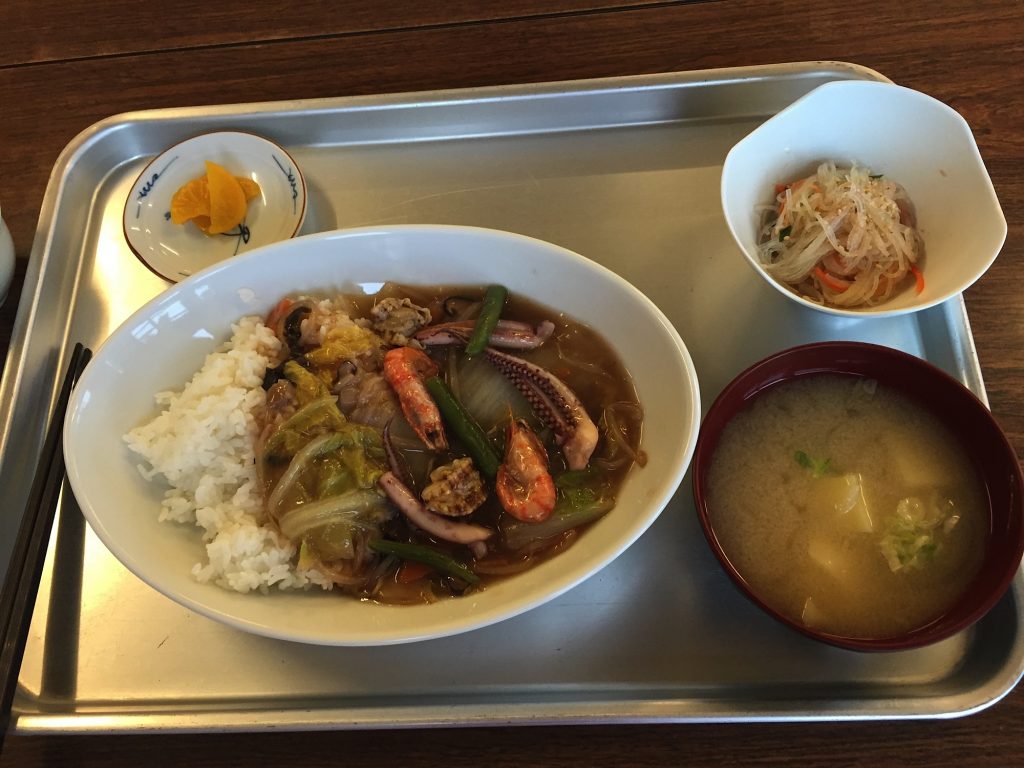
The closest restaurants or convenience stores not connected with Momoiwaso are a 30-minute walk away. This is a typical meal served in the dining room of the hostel – hearty food but nothing special. Reminds of me of the kind of thing that you’d get at camp.
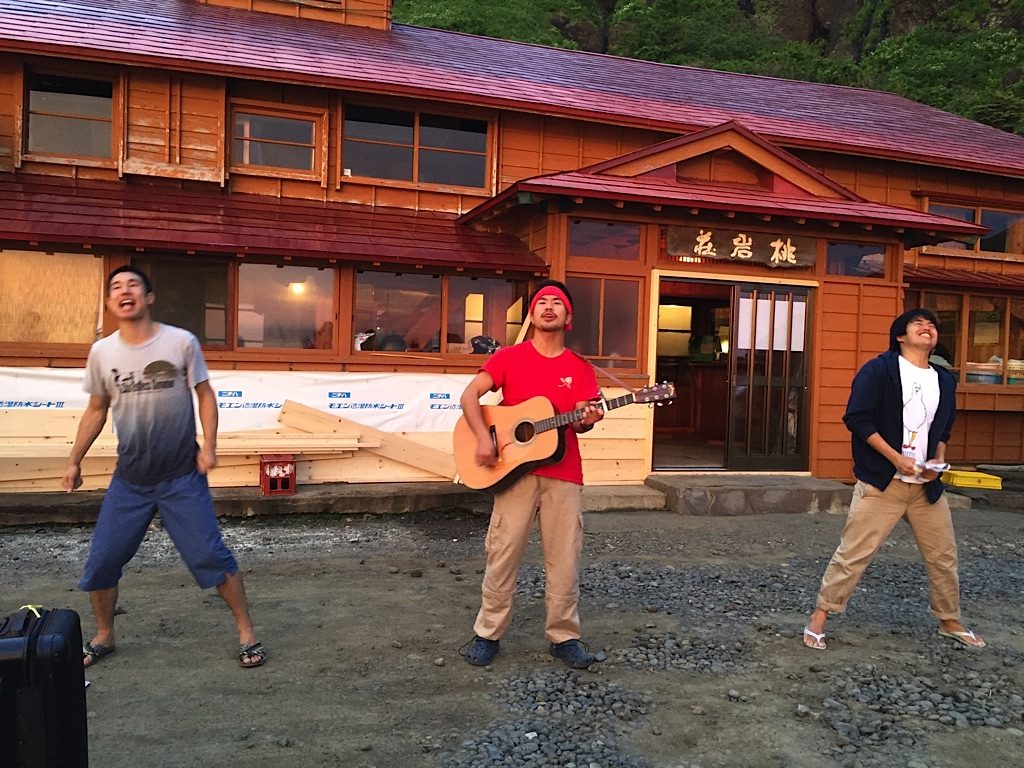
Singing to the sun…The entire staff and guests came outside to say goodbye to the sun for 30 minutes, which gave me for a whole new appreciation for all of that solar energy
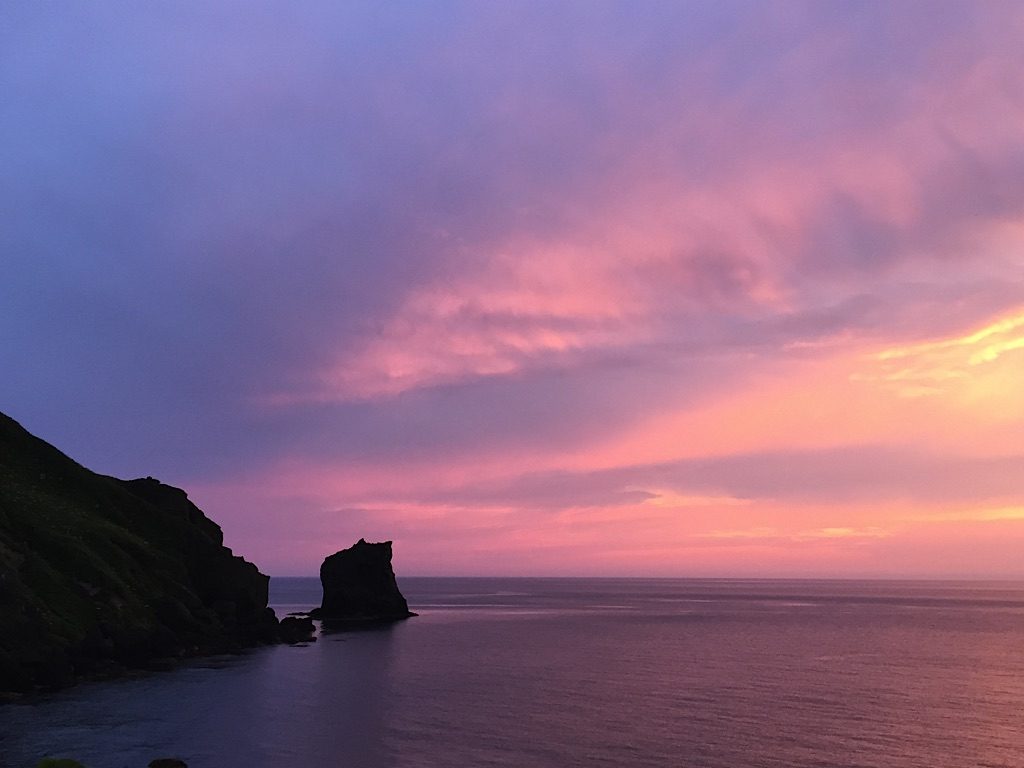
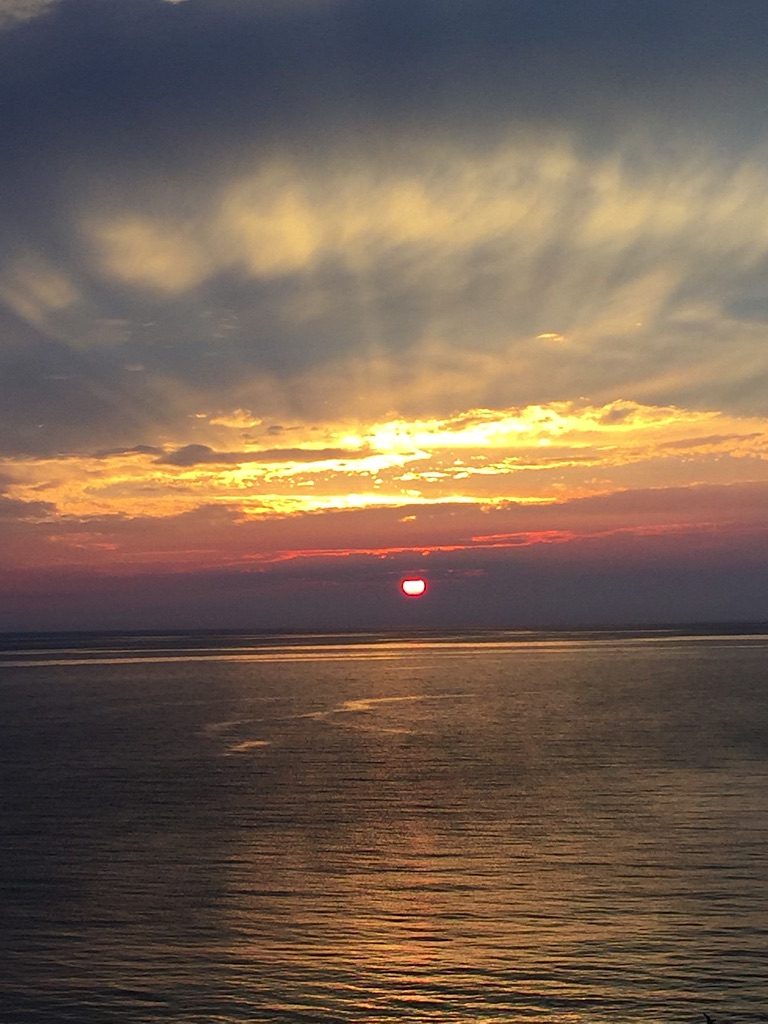
One of the most beautiful sunsets I’ve ever seen, especially for a girl who was in Tokyo just two days before
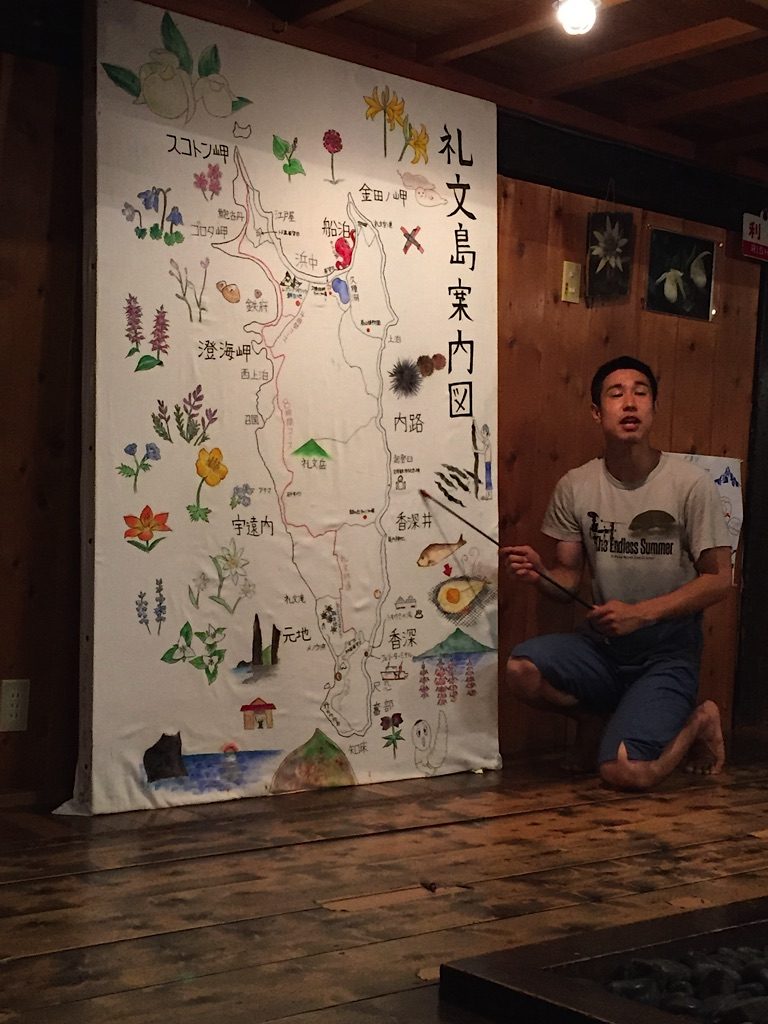
As part of the hostel’s show every night, complete with singing, dancing, skits, and exuberant clapping, the staff explains the next day’s “Hachijikan Course” (or 8-hour course) for those staying at the hostel that have decided to go on the arranged tour offered by the hostel. This comes complete with jokes and puns.
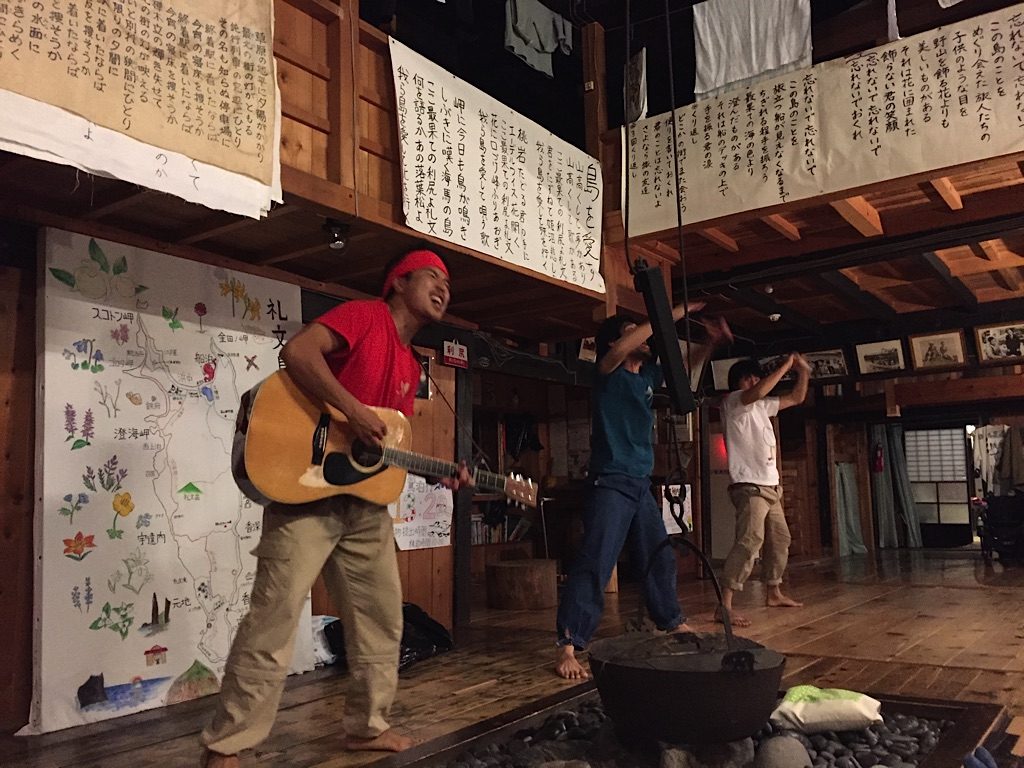
And now it’s time for everyone to sing (again). The lyrics are printed on the banners on all four sides of the Great Room. Good luck with that!
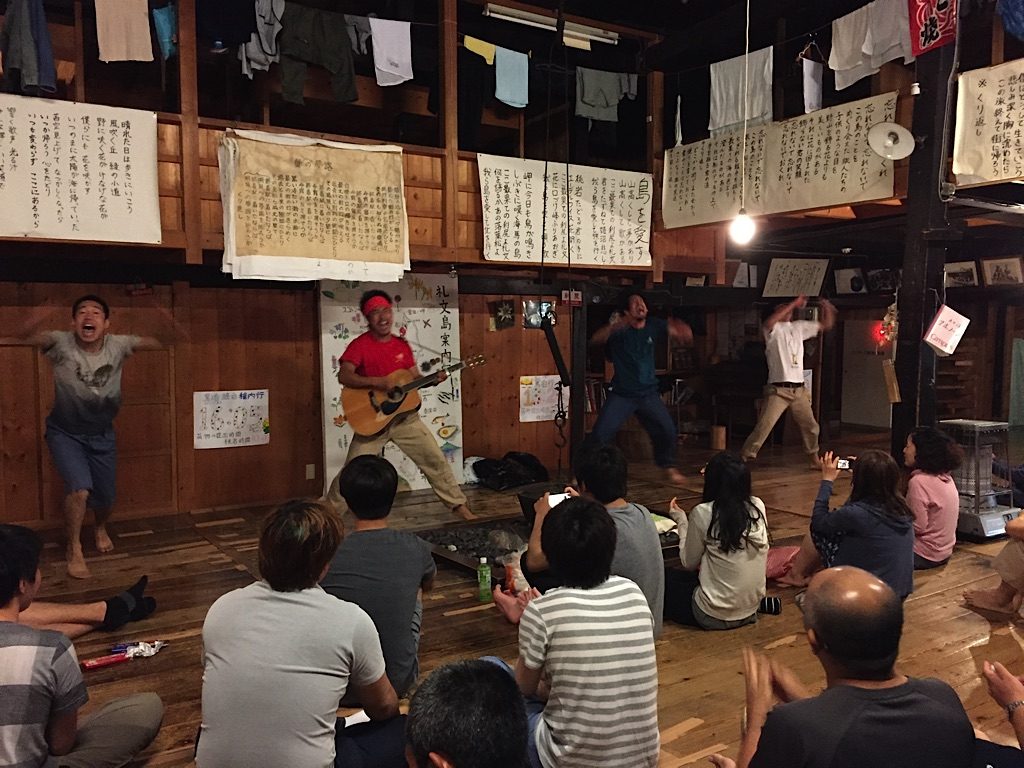
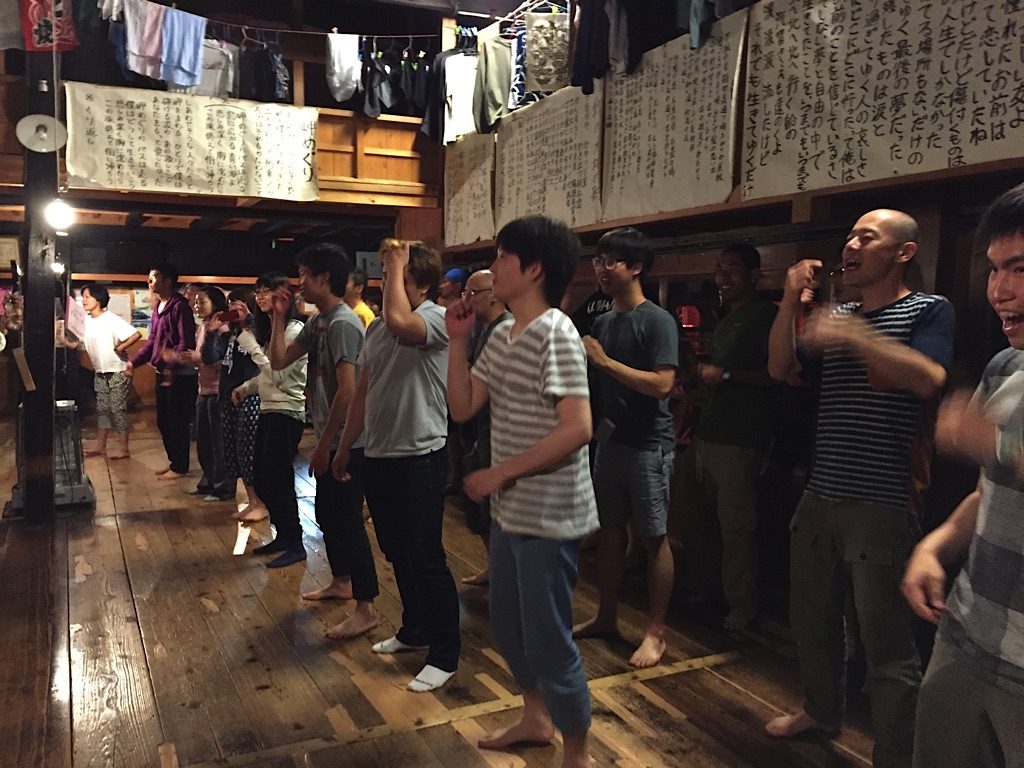
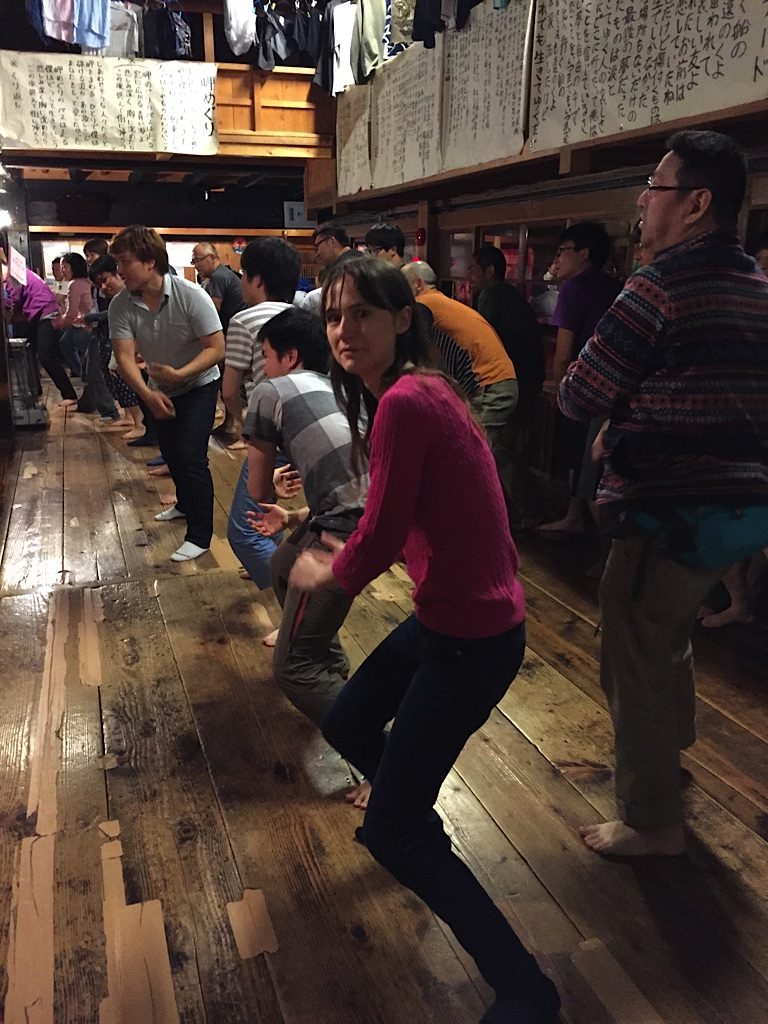
What have I gotten myself into?

I met Frederic from Montreal in the hippie van that picked me up at the ferry and then picked him on the side of the road. By that evening, we had found ourselves in an eating contest together. Neither of us won, but the summer camp vibe was now very strong!

How fast can you eat Japanese popsicles?
Eight Hours? More like 12!
Besides the wacky customs of the hostel itself, Momoiwaso encourages you to participate in Rebun Island’s “Hachijikan” course (or 8-hour course). This involves being taken to the trailhead by bus and left to find your way back as a group yourselves. No one from the hostel will actually stay with you. The guests of Momoiwaso who go together must work together to get back. The night before during the entertainment show, the hostel does ask the hiking group members to appoint a leader and subleader to start the hike off in the right direction the following day.
I’ve had a passion for hiking for the last few years and I’ve always found it to be one of the best ways to bond with people who you’ve never met before. It’s downright rude to listen to music right next to another hiker that you’re walking next to and impossible to scroll through your phone while climbing a hill, so communication and togetherness is inevitable. By the end of our hike (which turned into 12 hours after a lunch stop and some shopping stops), we had become fast friends and felt at ease around each other, even spending dinner together at Momoiwaso later that night. The hike itself was one of the most beautiful I’ve experienced in terms of views of the ocean, wild trail, interaction with local people, wildflowers, and variety of landscape throughout the day. This hiking course is a must if you’re coming to Rebun Island.
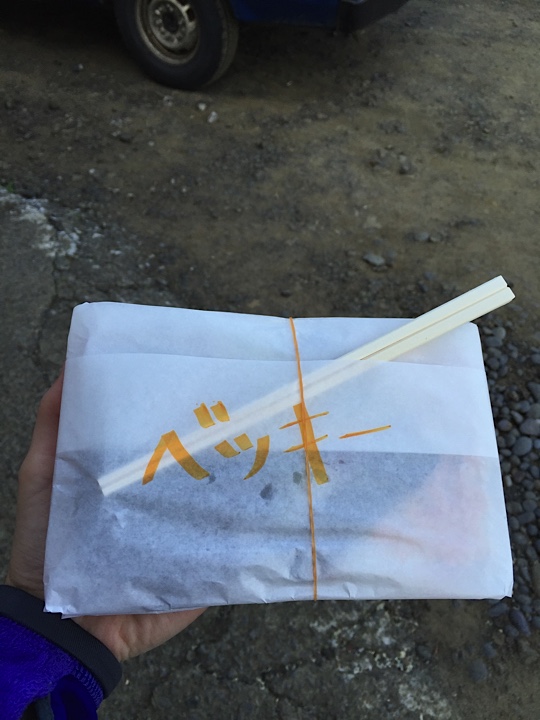
I was woken up at 4:30am hostel time (5am real-world time) to get in the van with the eight other hikers from my group. The hostel staff had made a nice lunch for me (the box says “Becky” in the Japanese katakana alphabet).

What a beautiful start to the day, even if it’s 5:30am!

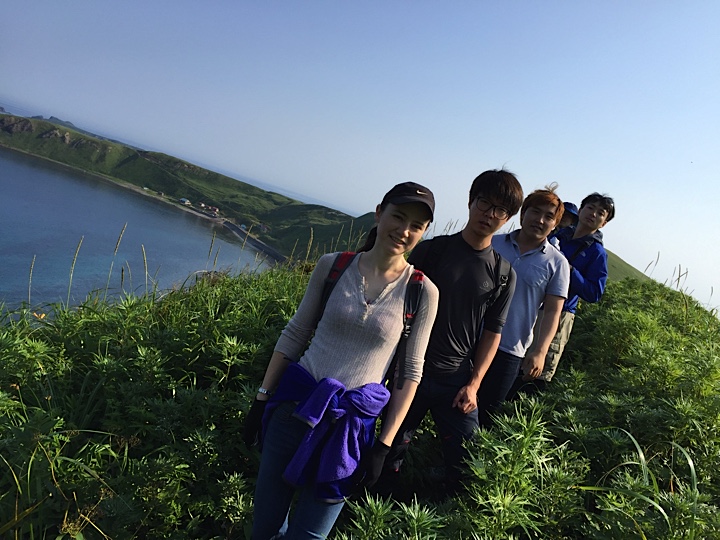
Although the hostel drives you to the starting point of the trail, no staff members actually go with the group. One leader and one “sub-leader” are appointed the night before and the group members get to know each other as the day goes on. My team turned out to be a mix of students and professionals from South Korea and Japan.

It sometimes felt like we were making the trail ourselves – loved the wildness of some parts of this trail!



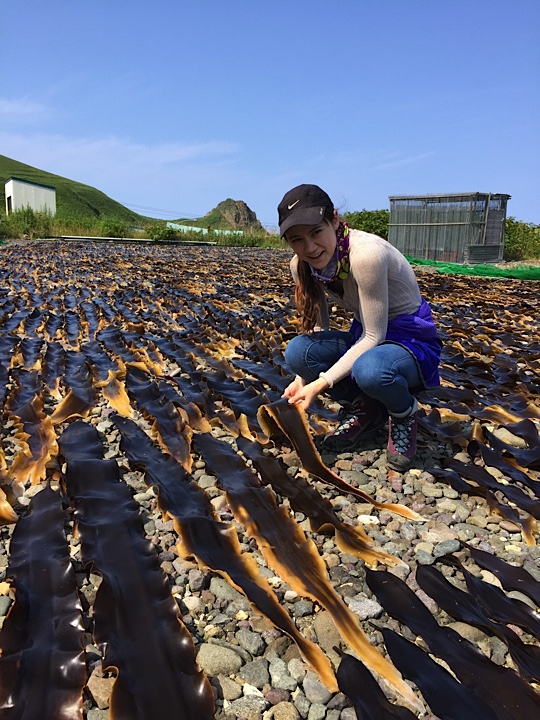
We passed a large patch of what looked like seaweed being laid out to dry in the sun

Taking a break with the hardworking women of Rebun

The most adorable little baseball players on their way to the game. I wanted to talk to these kids for hours.

Lunch break with new friends from South Korea.

Posing at one of the most picturesque spots on the hike.
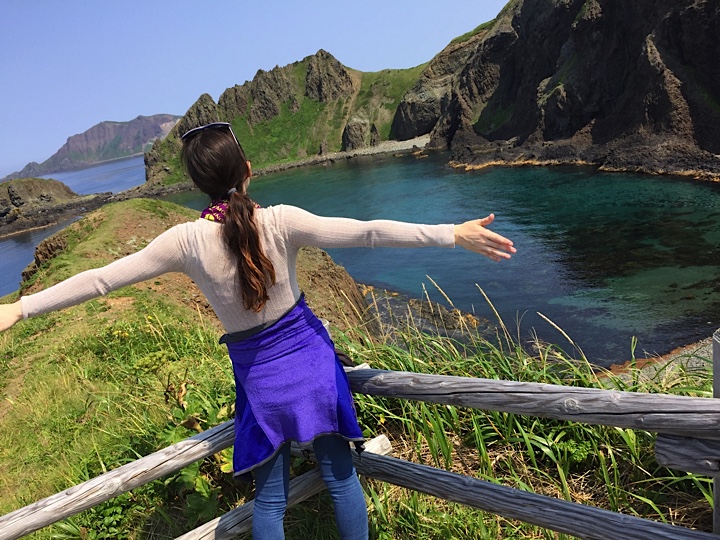
So grateful for the amazing weather
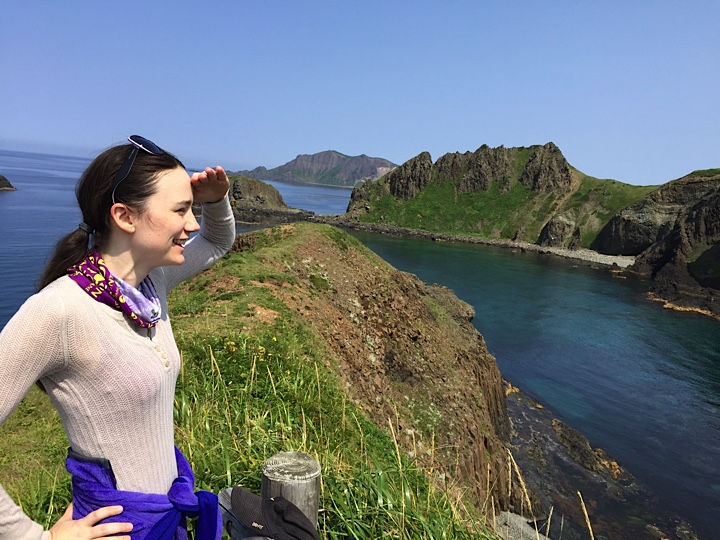

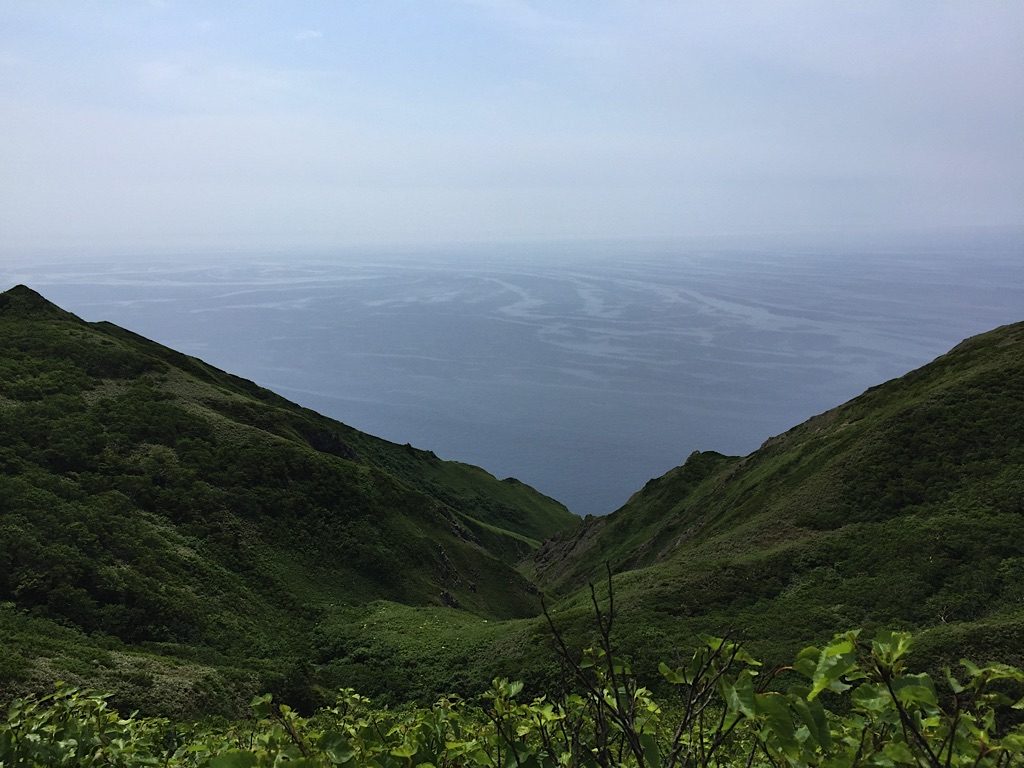
Hard to know where the sea ends and the sky begins
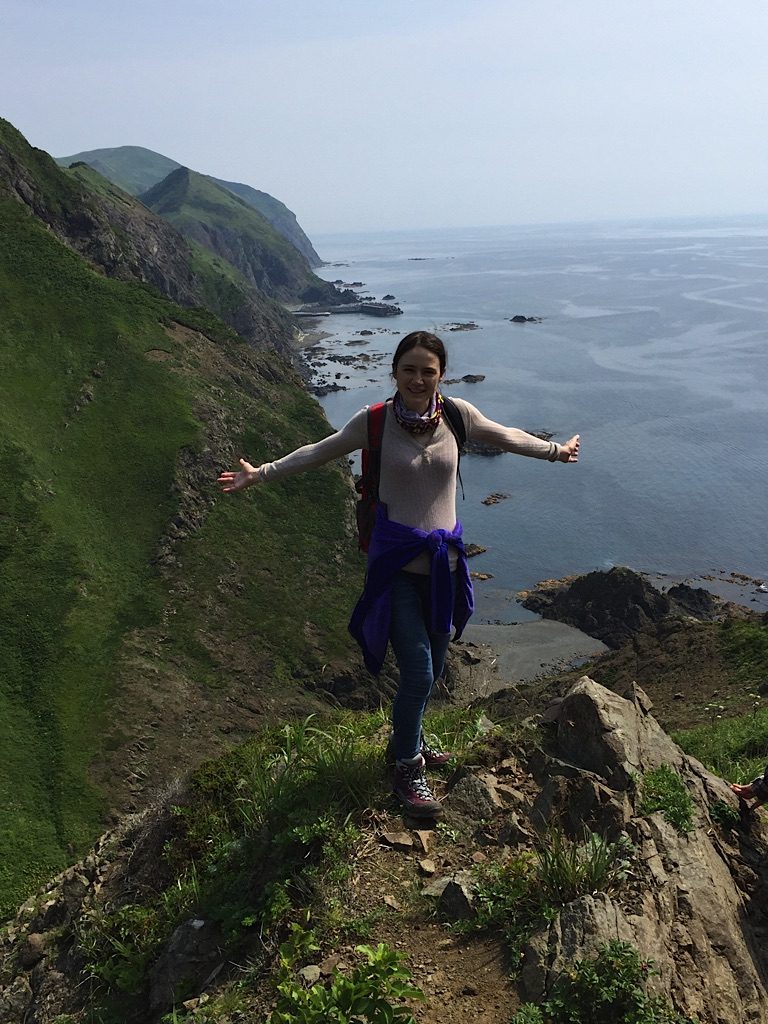
Falling in love with Rebun and this special part of Northern Hokkaido
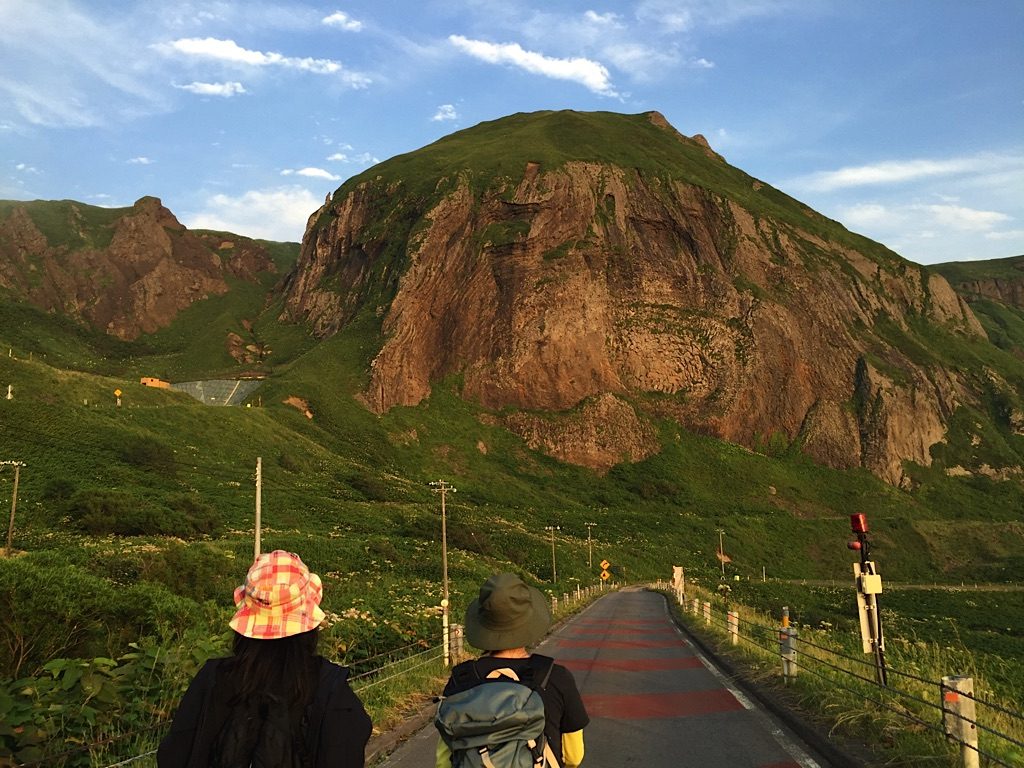
Almost home, after almost 12 hours in the end with our lunch break. I couldn’t get over the beauty of this place.
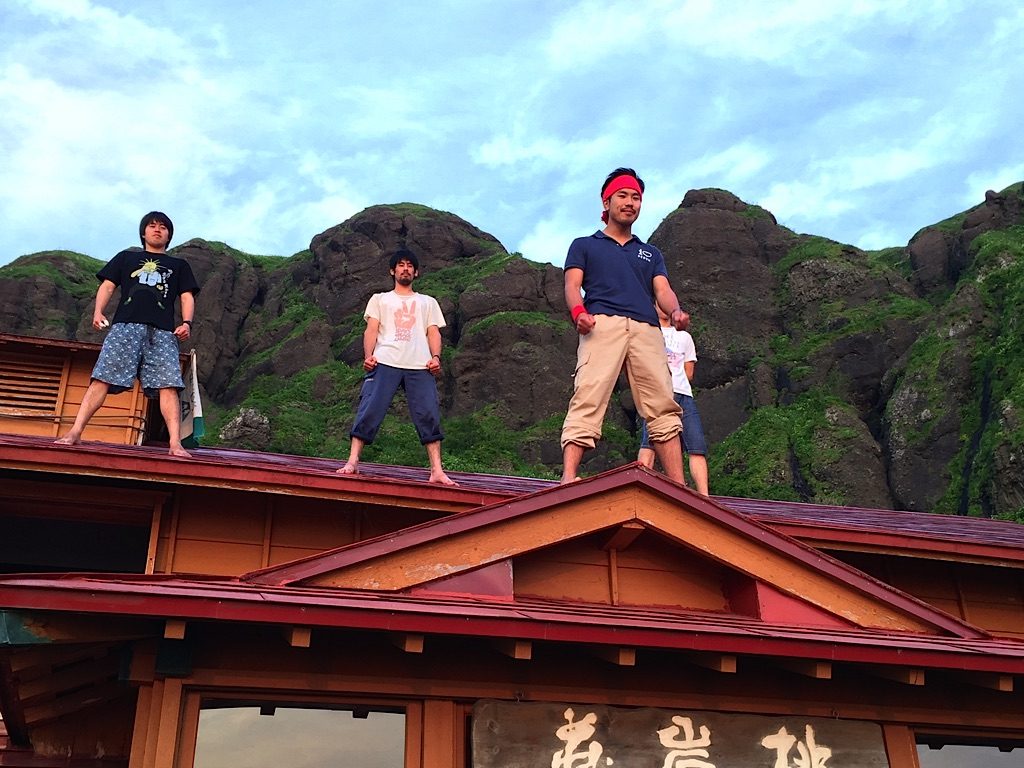
The only hostel in the world that sings and dances from the roof while welcoming you back home after a long day’s hike.
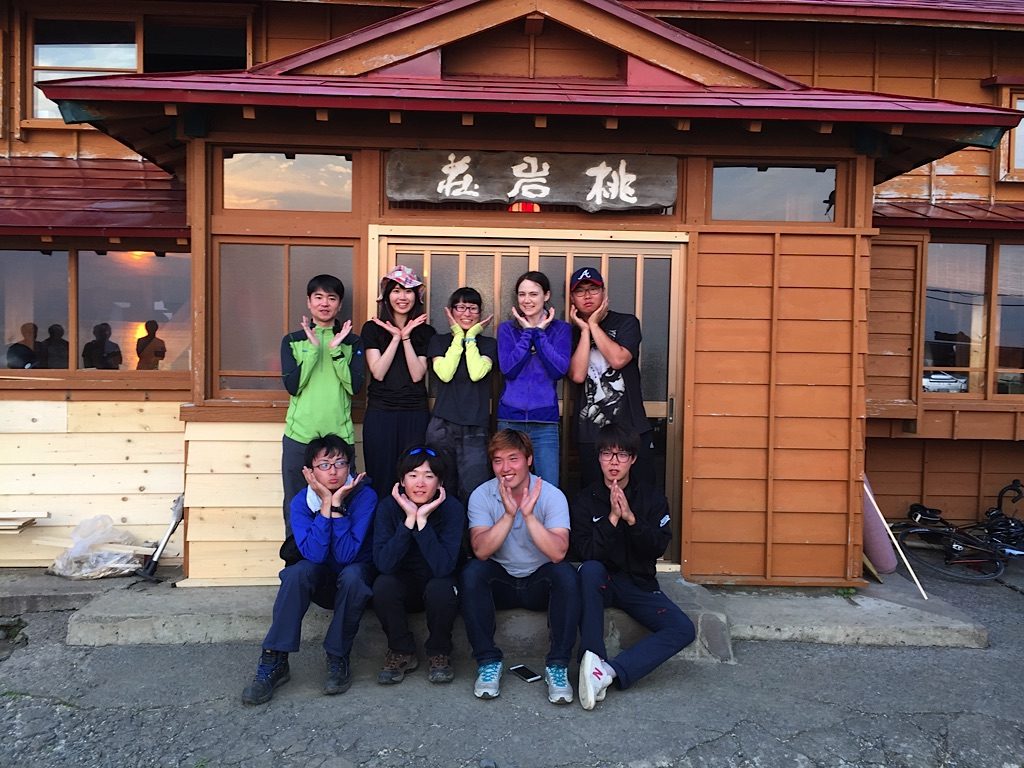
We made it!! Now time for a quick bath before a well-deserved dinner.
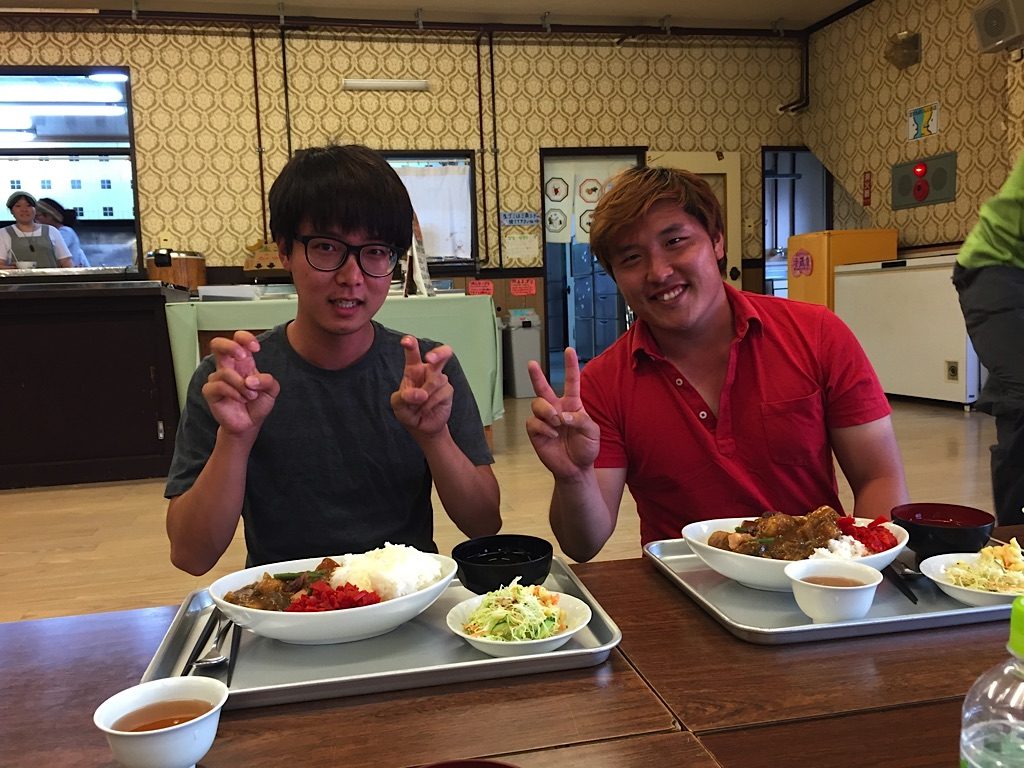
Dinner is served!
Saying Goodbye, Goodbye, Goodbye, Goodbye
My final morning at Momoiwaso felt like a long series of goodbyes starting after breakfast when the staff asked us once again to all come outside and say farewell to the group who had decided to walk the 30 minutes to the ferry port instead of taking the van. If you haven’t picked up on this already, energy is definitely rewarded on this small little corner of this tiny island, and this meant that the group leaving needed to yell out “Ittekimasu” (Japanese for “I’m going and I will come back”) while the rest of staying behind needed to yell out to the departing group “Itterashai” (“Please go and come back!”). This is typical in Japan for people leaving their homes and returning for the day. The father leaving for the day, for example, will say, “Ittekimasu” while his wife and/or kids say back “Itterashai!”After singing this morning group goodbye, we then continued to yell “Itterashai” long after the group was over the hill. While it was quite amusing to hear the echoing of the departing group’s “Ittekimasu” bouncing off of the surrounding hills, I wondered when our fearless energy leaders would decide that they really were gone. I think they must have had a double boost of extra special coffee that morning!
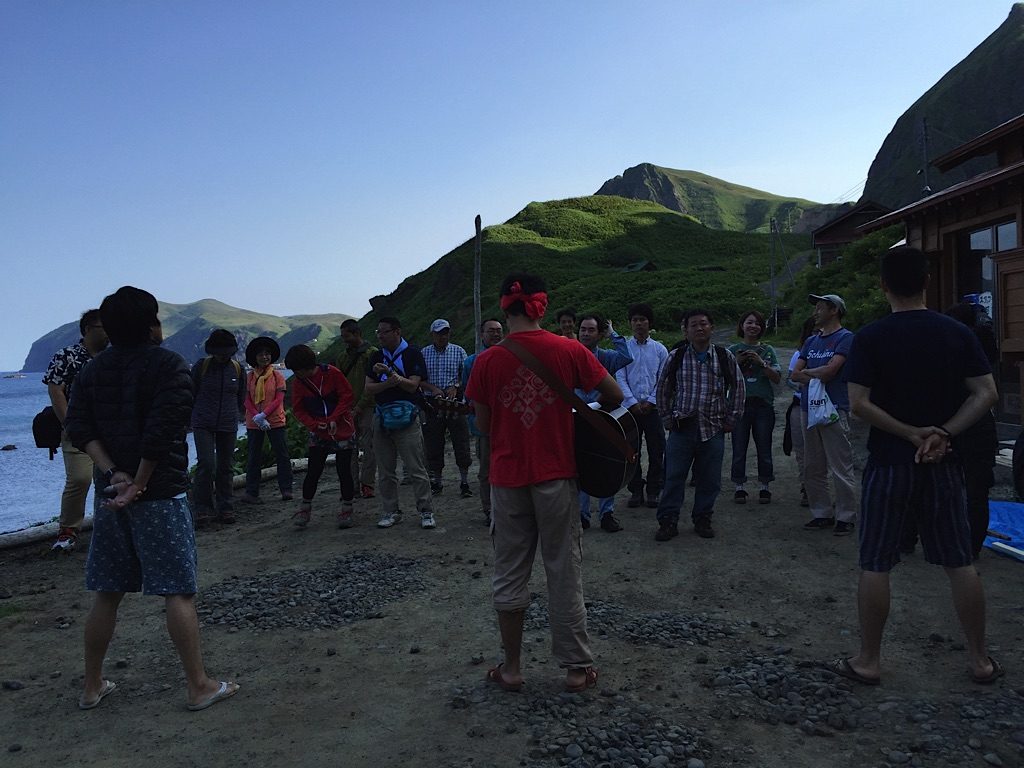
The last morning of my stay at Momoiwaso, we were asked to send off the group walking back to the ferry port. This included 30 minutes of back and forth shouting of “Ittekimasu!” (“I’m going and I will come back!”) from the departing group and “Itterashai!” (“Please go and come back!”) (hostel group). We literally yelled back and forth until we could no longer see them or hear their replies anymore.
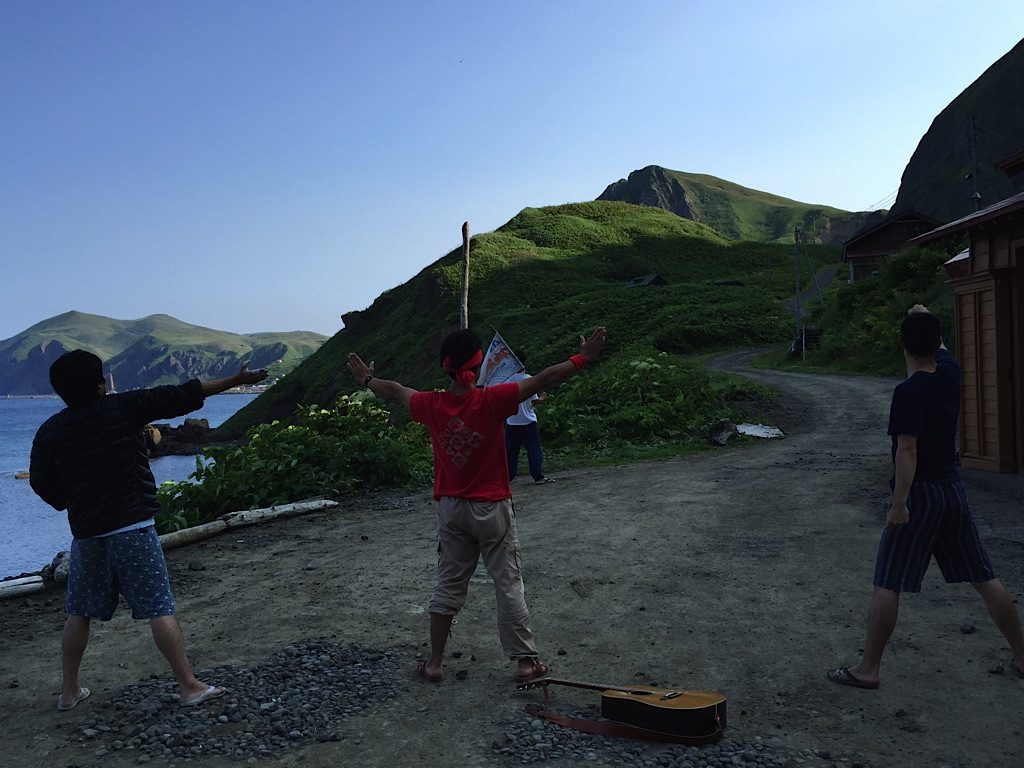
Are you sure they’re really gone? Best to keep yelling anyway!
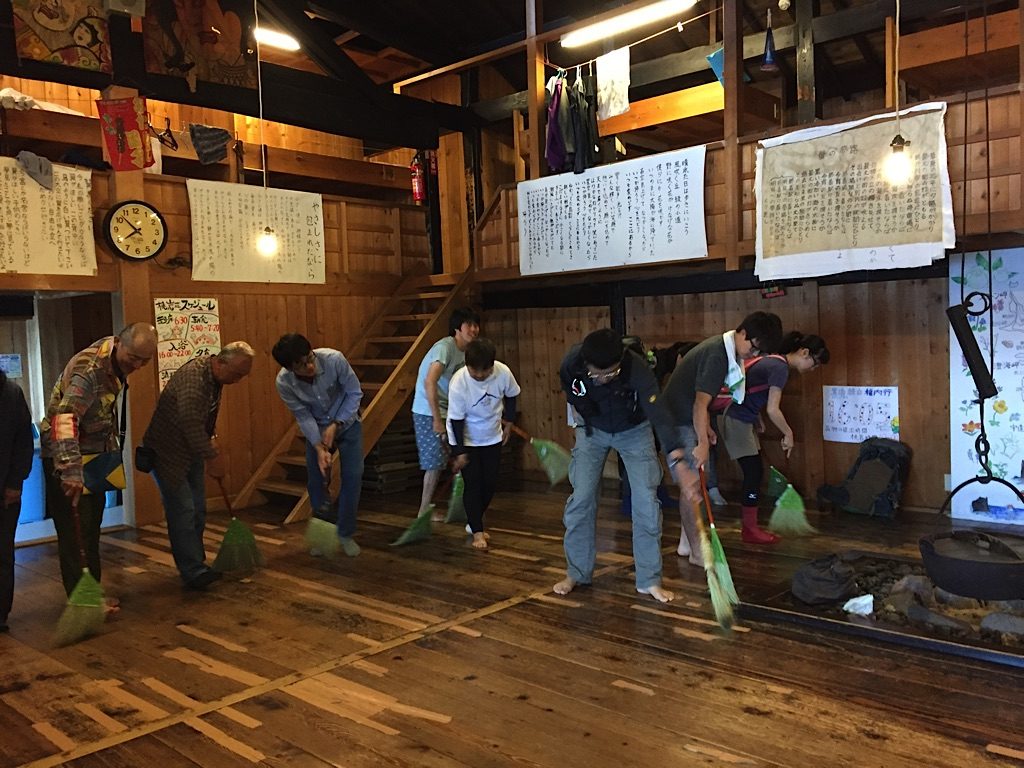
After breakfast, it’s time for everyone to clean the hostel together! This is similar to Japanese elementary schools, where all children are expected to help clean the school after lunch.
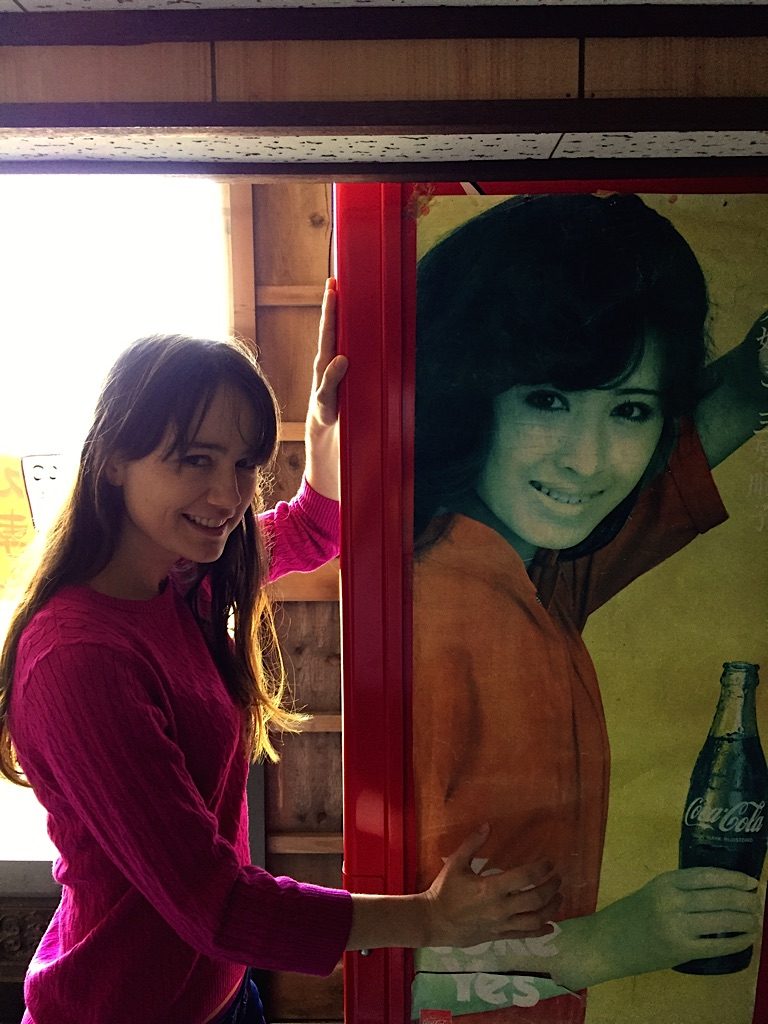
Having some last-minute fun before getting ready to leave. Love the vintage feel of Momoiwaso!
It Ain’t Over Until We Can’t See You Anymore
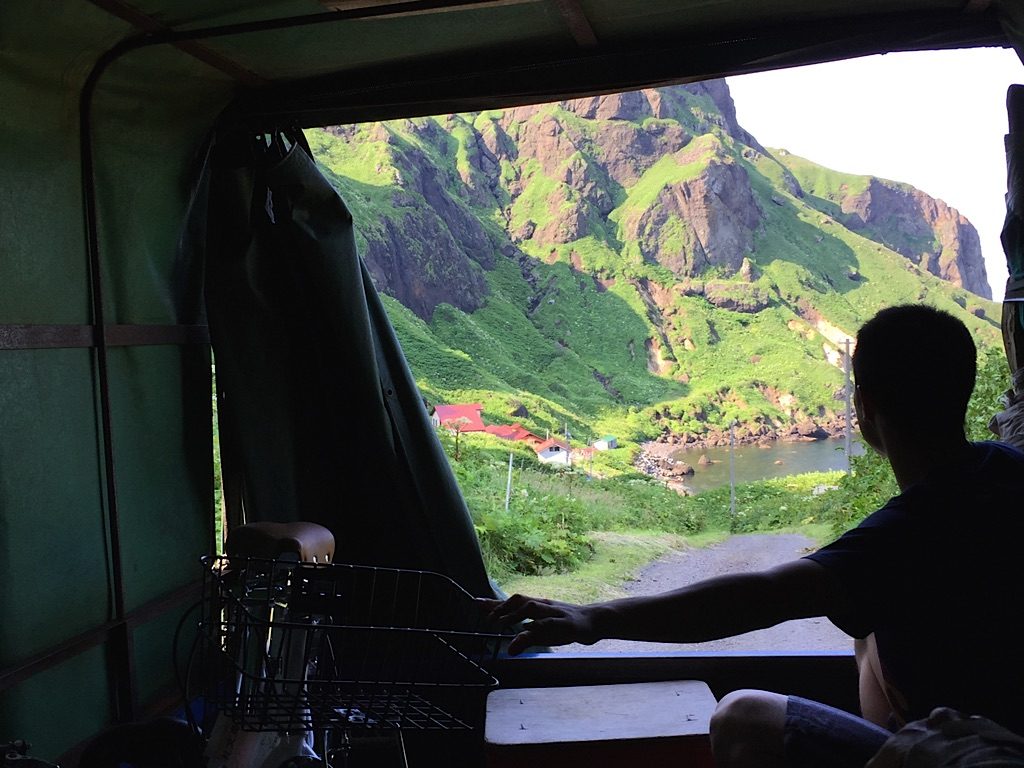
Leaving the crazy mixed-up world of Never Never Land, with a staff member coming along with us all the way to the ferry port.
As if our madcap two-day extravaganza of hiking, singing, dancing, and yelling over the hills wasn’t enough, it is the departure from Momoiwaso that is truly unforgettable (and I wish my iPhone had had the space to truly capture the moment, but please allow me to indulge you with a little Youtube). Not only do the Momoiwaso staff (and I mean the entire staff plus any and all interested current hostel guests) come along with you to the ferry port, they also get in formation and sing and dance you off, before then launching into the latest version of “Itterashai” while you, being well versed now in Momoiwaso-ness, find yourself yelling back “Ittekimasu” from the ferry as you’re pulling away. You continue to do so until you lose sight of land and are stared at rudely by an older, non Momoiwaso-looking fellow ferry passenger.
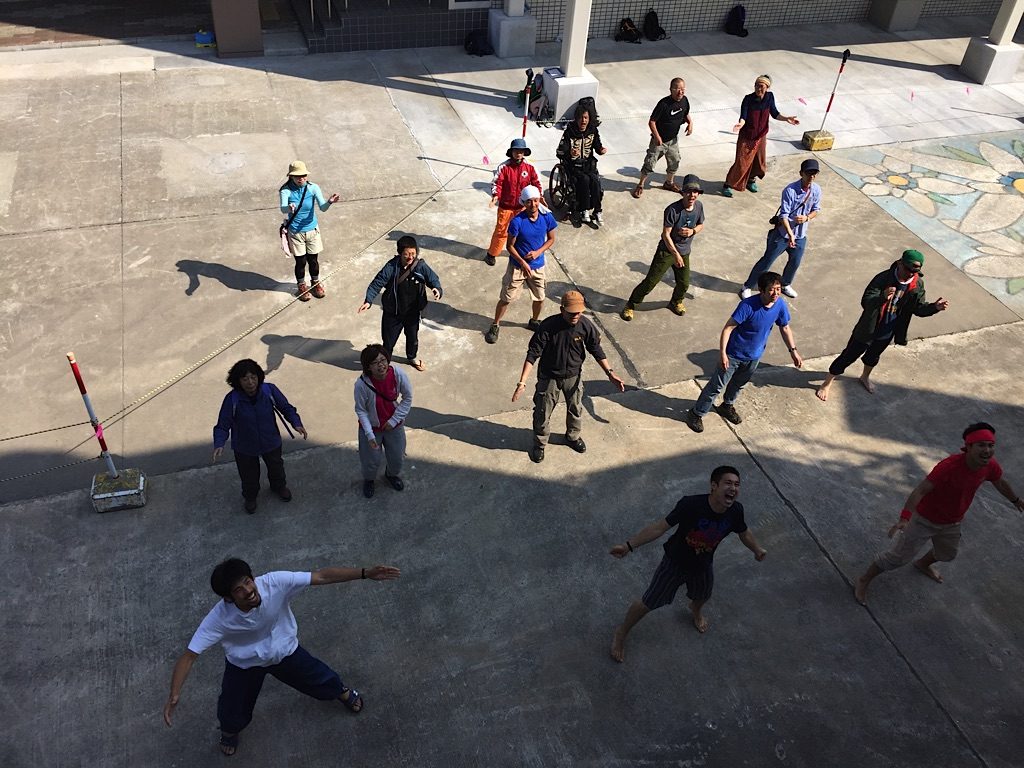
The only hostel in the world that sings and dances goodbye until your ferry is out of sight. Now trained experts in call and response, our group continued to shout “Ittekimasu” loudly back to group on the ferry port, despite other ferry passengers thinking we were crazy! Crazy is infectious when you stay at Momoiwaso.
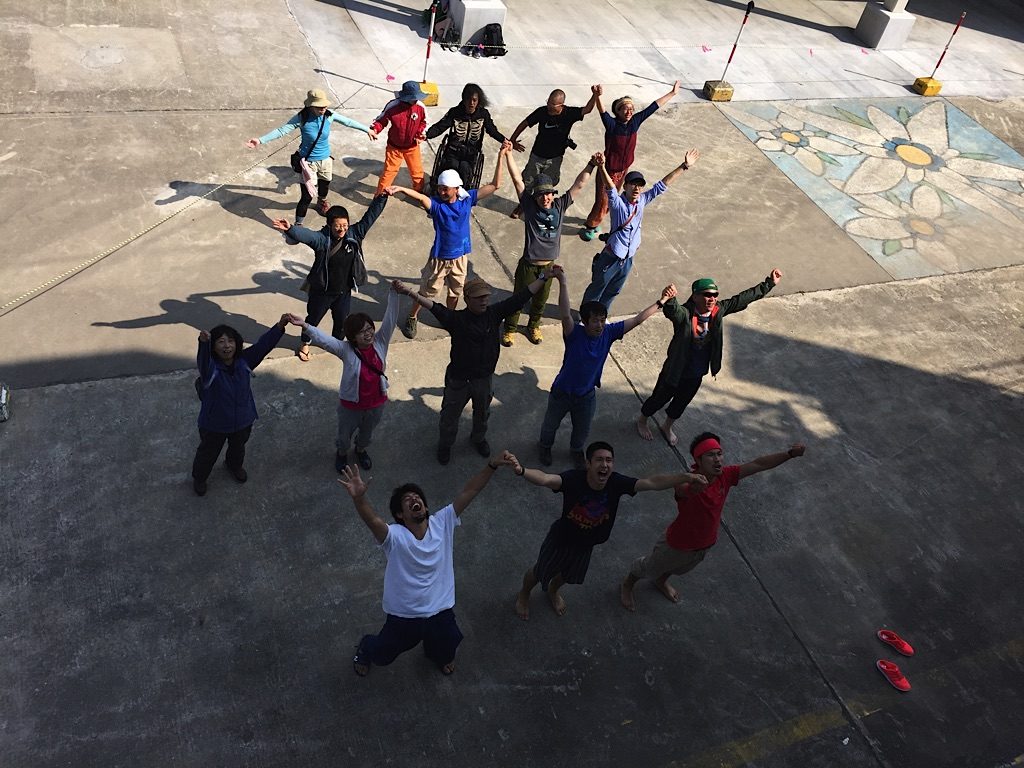
Cast these people in a musical now!
Trust me, you won’t need to watch this entire video, but it will definitely give you the idea! Kudos to the little girl in pink and her even younger brother for getting that Momoiwaso spirit!
My Overall Feelings about Momoiwaso Youth Hostel
Momoiwaso Youth Hostel is definitely not for everyone, that is for sure. If you’re looking for a place to relax, this is not that place! However, if you’re up for something truly original that will stick in your mind for years to come, this place is for you. Momoiwaso has actually been open for over 50 years and the staff said that all hostels in Japan used to be more like Momoiwaso style, but now it is one of the only, if not the only one like it (I’m sure its isolated location helps)! If you are open to the Momoiwaso experience and are comfortable with living in a simple, bunk bed accommodation dorm room style, eating cafeteria style meals and cleaning your own dishes, and following the Momoiwaso schedule, then it will may just be one of the most interesting travel experiences of your life. It’s like coming back to summer camp all over again, where dinner may just be interrupted by a man with a guitar and a rubber chicken. You will be asked to sing to songs that you don’t know with dance moves that you haven’t really mastered, all along one of the most beautiful coastlines in all of Japan.
Bring your sunscreen, bring your insect repellent for that hike, and bring your social nature, and Momoiwaso will be a place that you will never forget. It definitely ranks as one of the most unique hostels in the entire world. Are you ready?
Please note: Affiliate links are used in this post. If you make a purchase, I earn a small commission at no cost to you, which goes toward the cost of maintaining this blog.

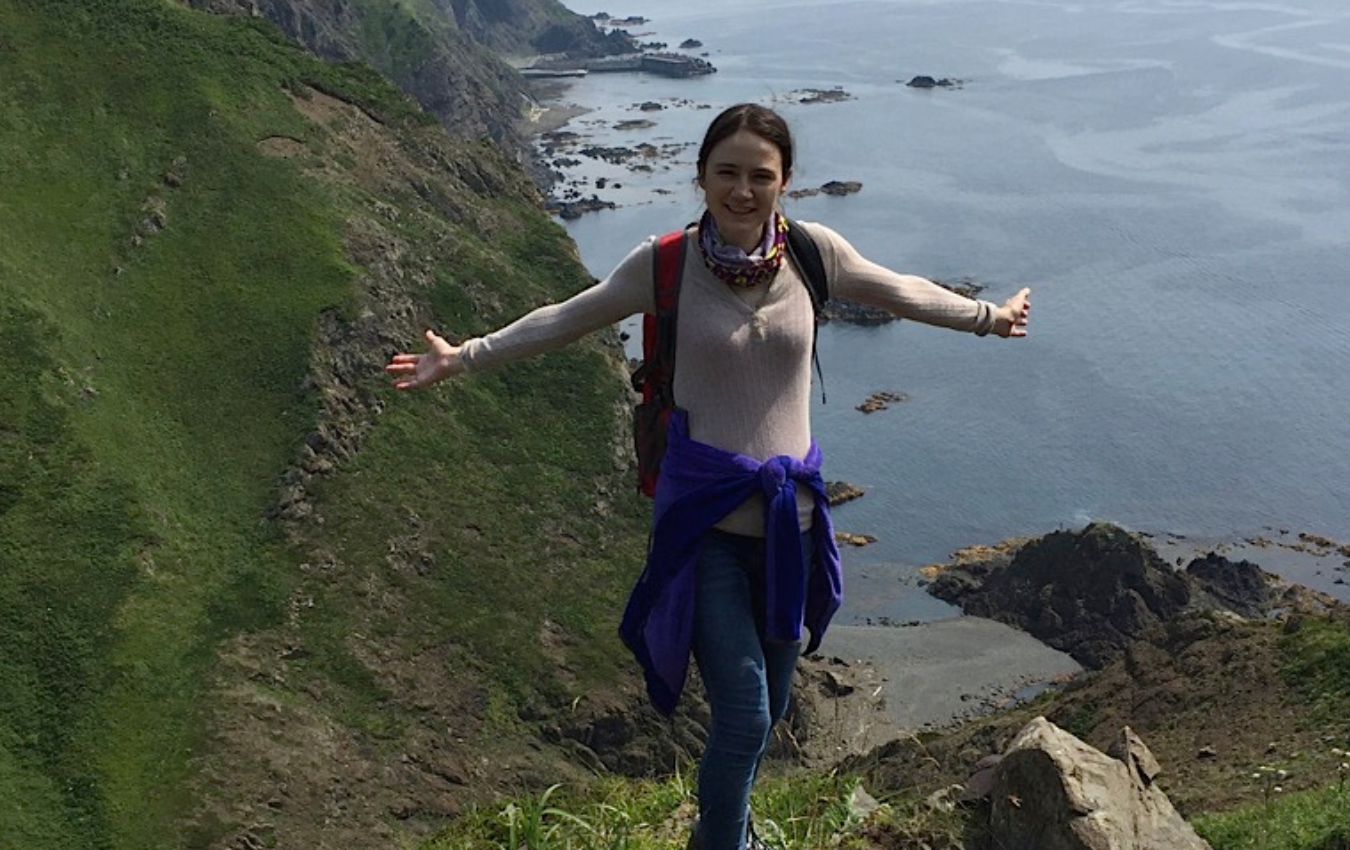
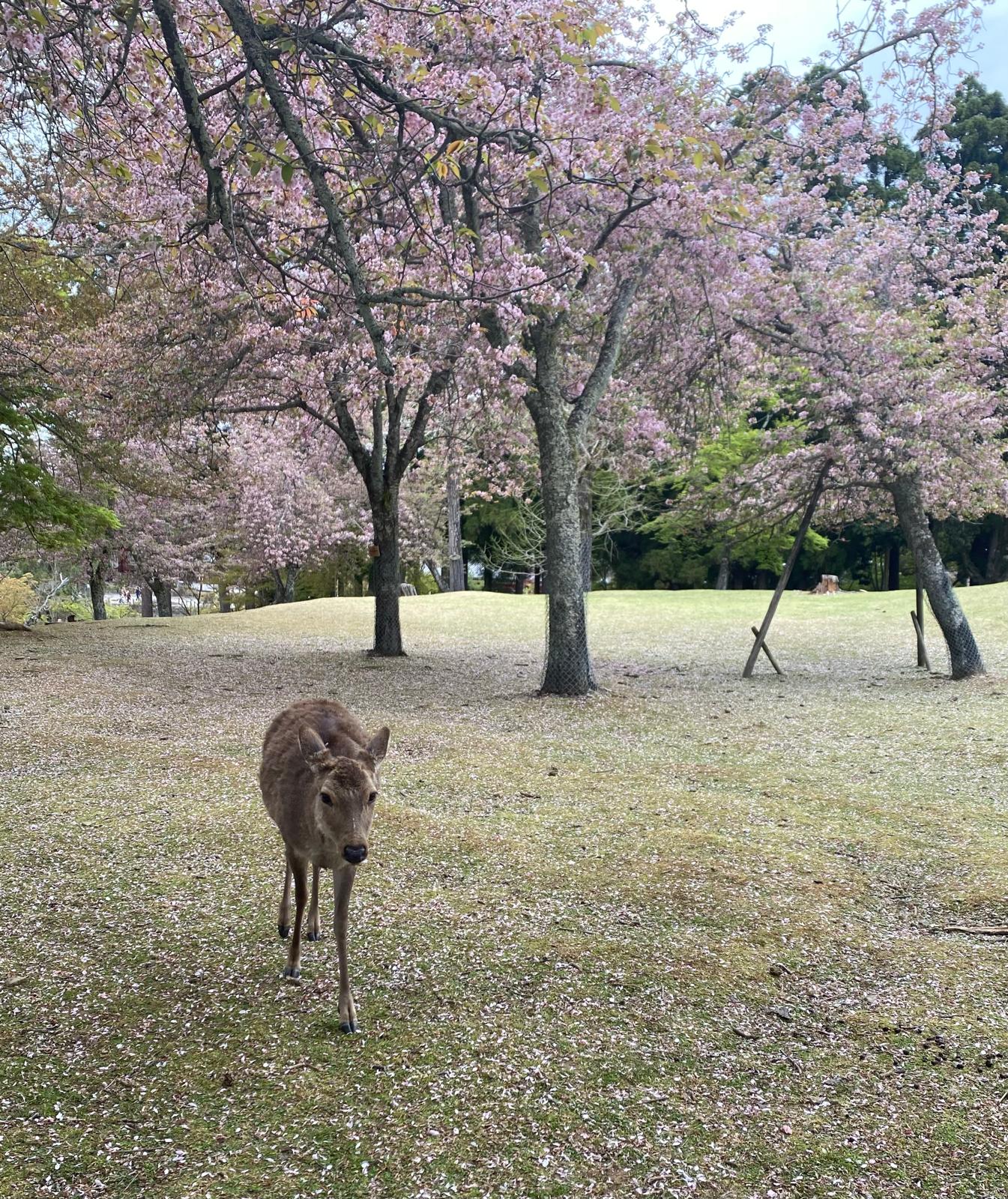
I just came back from a day of stay at Momoiwasu and can’t stop thinking of how bizzare yet beautiful world it was! No more cafeteria meals but they had a little shop inside selling cup noodles, rice and snacks for those in hunger. Should have stayed a bit longer to do the hike! Thanks for sharing😊
Hi Trudy,
I am so glad you made it to Momoiwasu. It is still one of the strangest travel experiences that I’ve ever had. Thank you for the update as well. I will update the article. I encourage you to come back and do the hike again! I know I want to return one day.
All the best,
Tokyo Becky